
Oracle® Fusion Middleware
Developing and Securing RESTful Web
Services for Oracle WebLogic Server
12c (12.2.1.4.0)
E90825-04
January 2023
Oracle Fusion Middleware Developing and Securing RESTful Web Services for Oracle WebLogic Server, 12c
(12.2.1.4.0)
E90825-04
Copyright © 2013, 2023, Oracle and/or its affiliates.
This software and related documentation are provided under a license agreement containing restrictions on
use and disclosure and are protected by intellectual property laws. Except as expressly permitted in your
license agreement or allowed by law, you may not use, copy, reproduce, translate, broadcast, modify, license,
transmit, distribute, exhibit, perform, publish, or display any part, in any form, or by any means. Reverse
engineering, disassembly, or decompilation of this software, unless required by law for interoperability, is
prohibited.
The information contained herein is subject to change without notice and is not warranted to be error-free. If
you find any errors, please report them to us in writing.
If this is software, software documentation, data (as defined in the Federal Acquisition Regulation), or related
documentation that is delivered to the U.S. Government or anyone licensing it on behalf of the U.S.
Government, then the following notice is applicable:
U.S. GOVERNMENT END USERS: Oracle programs (including any operating system, integrated software,
any programs embedded, installed, or activated on delivered hardware, and modifications of such programs)
and Oracle computer documentation or other Oracle data delivered to or accessed by U.S. Government end
users are "commercial computer software," "commercial computer software documentation," or "limited rights
data" pursuant to the applicable Federal Acquisition Regulation and agency-specific supplemental
regulations. As such, the use, reproduction, duplication, release, display, disclosure, modification, preparation
of derivative works, and/or adaptation of i) Oracle programs (including any operating system, integrated
software, any programs embedded, installed, or activated on delivered hardware, and modifications of such
programs), ii) Oracle computer documentation and/or iii) other Oracle data, is subject to the rights and
limitations specified in the license contained in the applicable contract. The terms governing the U.S.
Government's use of Oracle cloud services are defined by the applicable contract for such services. No other
rights are granted to the U.S. Government.
This software or hardware is developed for general use in a variety of information management applications.
It is not developed or intended for use in any inherently dangerous applications, including applications that
may create a risk of personal injury. If you use this software or hardware in dangerous applications, then you
shall be responsible to take all appropriate fail-safe, backup, redundancy, and other measures to ensure its
safe use. Oracle Corporation and its affiliates disclaim any liability for any damages caused by use of this
software or hardware in dangerous applications.
Oracle®, Java, and MySQL are registered trademarks of Oracle and/or its affiliates. Other names may be
trademarks of their respective owners.
Intel and Intel Inside are trademarks or registered trademarks of Intel Corporation. All SPARC trademarks are
used under license and are trademarks or registered trademarks of SPARC International, Inc. AMD, Epyc,
and the AMD logo are trademarks or registered trademarks of Advanced Micro Devices. UNIX is a registered
trademark of The Open Group.
This software or hardware and documentation may provide access to or information about content, products,
and services from third parties. Oracle Corporation and its affiliates are not responsible for and expressly
disclaim all warranties of any kind with respect to third-party content, products, and services unless otherwise
set forth in an applicable agreement between you and Oracle. Oracle Corporation and its affiliates will not be
responsible for any loss, costs, or damages incurred due to your access to or use of third-party content,
products, or services, except as set forth in an applicable agreement between you and Oracle.

Contents
Preface
Audience vii
Documentation Accessibility vii
Diversity and Inclusion vii
Conventions vii
What’s New in This Guide
New and Changed Features for Release 12c (12.2.1.x) ix
New and Changed Features for Release 12c (12.2.1) ix
New and Changed Features for Release 12c (12.1.3) x
New and Changed Features for Release 12c (12.1.2) x
1
Introduction to RESTful Web Services
Introduction to the REST Architectural Style 1-1
What are RESTful Web Services? 1-2
Standards Supported for RESTful Web Service Development on WebLogic Server 1-2
Roadmap for Implementing RESTful Web Services 1-3
Learn More About RESTful Web Services 1-4
2
Developing RESTful Web Services
About RESTful Web Service Development 2-1
Summary of Tasks to Develop RESTful Web Services 2-1
Example of a RESTful Web Service 2-2
Defining the Root Resource Class 2-3
Defining the Relative URI of the Root Resource and Subresources 2-3
How to Define the Relative URI of the Resource Class (@Path) 2-4
How to Define the Relative URI of Subresources (@Path) 2-5
What Happens at Runtime: How the Base URI is Constructed 2-5
Mapping Incoming HTTP Requests to Java Methods 2-6
About the Jersey Bookmark Sample 2-7
iii

How to Transmit a Representation of the Resource (@GET) 2-7
How to Create or Update the Representation of the Resource (@PUT) 2-9
How to Delete a Representation of the Resource (@DELETE) 2-9
How to Create, Update, or Perform an Action on a Representation of the Resource
(@POST) 2-10
Customizing Media Types for the Request and Response Messages 2-11
How To Customize Media Types for the Request Message (@Consumes) 2-11
How To Customize Media Types for the Response Message (@Produces) 2-12
What Happens At Runtime: How the Resource Method Is Selected for Response
Messages 2-12
Extracting Information From the Request Message 2-13
How to Extract Variable Information from the Request URI (@PathParam) 2-13
How to Extract Request Parameters (@QueryParam) 2-14
How to Define the DefaultValue (@DefaultValue) 2-15
Enabling the Encoding Parameter Values (@Encoded) 2-15
Building Custom Response Messages 2-16
Mapping HTTP Request and Response Entity Bodies Using Entity Providers 2-18
Accessing the Application Context 2-20
Building URIs 2-20
Using Conditional GETs 2-21
Accessing the WADL 2-22
More Advanced RESTful Web Service Tasks 2-23
3
Developing RESTful Web Service Clients
Summary of Tasks to Develop RESTful Web Service Clients 3-1
Example of a RESTful Web Service Client 3-2
Invoking a RESTful Web Service from a Standalone Client 3-2
4
Building, Packaging, and Deploying RESTful Web Service Applications
Building RESTful Web Service Applications 4-1
Packaging RESTful Web Service Applications 4-1
Packaging With an Application Subclass 4-2
Packaging With a Servlet 4-2
How to Package the RESTful Web Service Application with Servlet 3.0 4-3
How to Package the RESTful Web Service Application with Pre-3.0 Servlets 4-5
Packaging as a Default Resource 4-7
Deploying RESTful Web Service Applications 4-7
iv

5
Securing RESTful Web Services and Clients
About RESTful Web Service Security 5-1
Securing RESTful Web Services and Clients Using OWSM Policies 5-1
Securing RESTful Web Services Using web.xml 5-2
Securing RESTful Web Services Using SecurityContext 5-3
Securing RESTful Web Services Using Java Security Annotations 5-4
6
Testing RESTful Web Services
7
Monitoring RESTful Web Services and Clients
About Monitoring RESTful Web Services 7-1
Monitoring RESTful Web Services Using Enterprise Manager Fusion Middleware Control 7-2
Monitoring RESTful Web Services Using the Administration Console 7-2
Monitoring RESTful Web Services Using WLST 7-2
Enabling the Tracing Feature 7-6
Disabling RESTful Web Service Application Monitoring 7-6
Disabling Monitoring for a RESTful Web Service Application Using Jersey Property 7-7
Disabling Monitoring for a RESTful Web Service Application Using WebLogic
Configuration MBean 7-8
Disabling RESTful Web Service Application Monitoring for a WebLogic Domain 7-9
Enable Monitoring of Synthetic Jersey Resources in a RESTful Web Service Application 7-10
8
Using Server-Sent Events in WebLogic Server
Overview of Server-Sent Events (SSE) 8-1
Understanding the WebLogic Server-Sent Events API 8-1
Sample Applications for Server-Sent Events 8-2
A
Compatibility with Earlier Jersey/JAX-RS Releases
Develop RESTful Web Service Clients Using Jersey 1.18 (JAX-RS 1.1 RI) A-1
Example of a RESTful Web Service Client A-2
Creating and Configuring a Client Instance A-2
Creating a Web Resource Instance A-4
Sending Requests to the Resource A-5
How to Build Requests A-5
How to Send HTTP Requests A-6
How to Pass Query Parameters A-7
How to Configure the Accept Header A-8
v

How to Add a Custom Header A-8
How to Configure the Request Entity A-8
Receiving a Response from a Resource A-9
How to Access the Status of Request A-9
How to Get the Response Entity A-9
More Advanced RESTful Web Service Client Tasks A-10
Support for Jersey 1.18 (JAX-RS 1.1 RI) Deployments Packaged with Pre-3.0 Servlets A-10
vi

Preface
This documentation describes how to develop Java EE web services for Oracle WebLogic
Server 12c.
Audience
This documentation is written for software developers who want develop Java EE web
services for Oracle WebLogic Server 12c that conform to the Representational State Transfer
(REST) architectural style using Java API for RESTful Web Services (JAX-RS).
Documentation Accessibility
For information about Oracle's commitment to accessibility, visit the Oracle Accessibility
Program website at
http://www.oracle.com/pls/topic/lookup?ctx=acc&id=docacc
.
Access to Oracle Support
Oracle customers that have purchased support have access to electronic support through My
Oracle Support. For information, visit
http://www.oracle.com/pls/topic/lookup?
ctx=acc&id=info
or visit
http://www.oracle.com/pls/topic/lookup?ctx=acc&id=trs
if you
are hearing impaired.
Diversity and Inclusion
Oracle is fully committed to diversity and inclusion. Oracle respects and values having a
diverse workforce that increases thought leadership and innovation. As part of our initiative to
build a more inclusive culture that positively impacts our employees, customers, and
partners, we are working to remove insensitive terms from our products and documentation.
We are also mindful of the necessity to maintain compatibility with our customers' existing
technologies and the need to ensure continuity of service as Oracle's offerings and industry
standards evolve. Because of these technical constraints, our effort to remove insensitive
terms is ongoing and will take time and external cooperation.
Conventions
The following text conventions are used in this document:
Convention
Meaning
boldface
Boldface type indicates graphical user interface elements associated with an
action, or terms defined in text or the glossary.
italic Italic type indicates book titles, emphasis, or placeholder variables for which
you supply particular values.
vii

Convention Meaning
monospace
Monospace type indicates commands within a paragraph, URLs, code in
examples, text that appears on the screen, or text that you enter.
Preface
viii

What’s New in This Guide
Learn about the new and changed features of RESTful web services and get links to
additional information. This document was released initially in Oracle Fusion Middleware 12c
Release 1 (12.1.1).
New and Changed Features for Release 12c (12.2.1.x)
There are no updates to this guide for the Oracle Fusion Middleware 12c (12.2.1.x) release.
For a comprehensive listing of the new WebLogic Server features introduced in this release,
see What's New in Oracle WebLogic Server.
New and Changed Features for Release 12c (12.2.1)
For the Oracle Fusion Middleware Release 12c (12.2.1) release, RESTful web services
includes several new and changed features that are described in this document. These
include the following:
• Provides support for Jersey 2.x (JAX-RS 2.0 RI) by default in this release. Registration as
a shared library with WebLogic Server is no longer required.
• Provides enhanced monitoring of RESTful web services in the WebLogic Administration
Console, including enhanced runtime statistics for your RESTful applications and
resources, detailed deployment and configuration data, global execution statistics, and
resource and resource method execution statistics. See Monitoring RESTful Web
Services and Clients.
• Includes the ability to disable RESTful web services monitoring at the individual
application level, or globally at the domain level. See Disabling RESTful Web Service
Application Monitoring.
• Reflects support for the Jersey 2.21.1 JAX-RS 2.0 RI.
• Supports securing Jersey 2.x (JAX-RS 2.0 RI) web services using Oracle Web Services
Manager (OWSM) security policies. See Securing RESTful Web Services and Clients
Using OWSM Policies.
• Adds support for Java EE 7.
• The Jersey 1.x client API is deprecated. It is recommended that you update your RESTful
client applications to use the JAX-RS 2.0 client APIs at your earliest convenience.
• Removes support for the Jersey 1.x (JAX-RS 1.1. RI) server APIs. You should use the
corresponding standard JAX-RS 2.0 or Jersey 2.x APIs instead.
ix

Note:
Support for the Jersey 1.18 (JAX-RS 1.1RI) client APIs are deprecated in
this release of WebLogic Server but are maintained for backward
compatibility. See Develop RESTful Web Service Clients Using Jersey
1.18 (JAX-RS 1.1 RI).
Oracle recommends that you update your RESTful client applications to
use the JAX-RS 2.0 client APIs at your earliest convenience.
New and Changed Features for Release 12c (12.1.3)
Oracle Fusion Middleware Release 12c (12.1.3) includes two new and changed
features for RESTful web services that are described in this document.
• Reflects support of the Jersey 2.5.1 Java API for RESTful Web Services (JAX-RS)
2.0 Reference Implementation (RI) as a pre-built shared library.
• Reflects support for the Jersey 1.18 JAX-RS 1.1. RI.
New and Changed Features for Release 12c (12.1.2)
Oracle Fusion Middleware 12c (12.1.2) includes two new and changed features for
RESTful web services that are described in this document.
• Secure RESTful web services using Oracle Web Services Manager (OWSM)
policies. See Securing RESTful Web Services and Clients Using OWSM Policies.
• New standalone web service client JAR files that support basic RESTful web
service client-side functionality and Oracle Web Services Manager (OWSM)
security policy support. See Invoking a RESTful Web Service from a Standalone
Client.
What’s New in This Guide
x
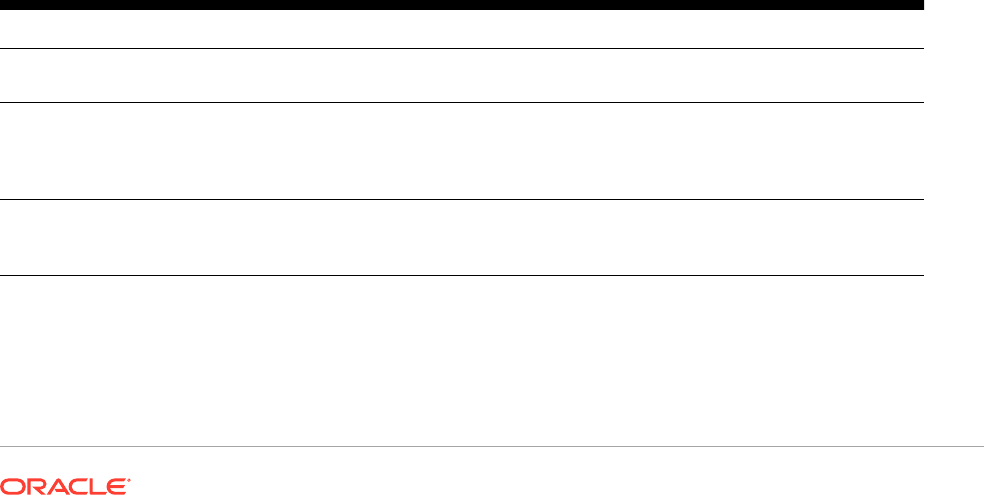
1
Introduction to RESTful Web Services
RESTful web services are Java EE web services that you develop to conform to the
Representational State Transfer (REST) architectural style using Java API for RESTful Web
Services (JAX-RS).
• Introduction to the REST Architectural Style
• What are RESTful Web Services?
• Standards Supported for RESTful Web Service Development on WebLogic Server
• Roadmap for Implementing RESTful Web Services
• Learn More About RESTful Web Services
Introduction to the REST Architectural Style
REST describes any simple interface that transmits data over a standardized interface (such
as HTTP) without an additional messaging layer, such as Simple Object Access Protocol
(SOAP). REST is an architectural style—not a toolkit—that provides a set of design rules for
creating stateless services that are viewed as resources, or sources of specific information
(data and functionality). Each resource can be identified by its unique Uniform Resource
Identifiers (URIs).
A client accesses a resource using the URI and a standardized fixed set of methods, and a
representation of the resource is returned. A representation of a resource is typically a
document that captures the current or intended state of a resource. The client is said to
transfer state with each new resource representation.
Table 1-1 defines a set of constraints defined by the REST architectural style that must be
adhered to in order for an application to be considered "RESTful."
Table 1-1 Constraints of the REST Architectural Style
Constraint Description
Addressability Identifies all resources using a uniform resource identifier (URI). In the English
language, URIs would be the equivalent of a noun.
Uniform interface Enables the access of a resource using a uniform interface, such as HTTP methods
(GET, POST, PUT, and DELETE). Applying the English language analogy, these
methods would be considered verbs, describing the actions that are applicable to the
named resource.
Client-server architecture Separates clients and servers into interface requirements and data storage
requirements. This architecture improves portability of the user interface across
multiple platforms and scalability by simplifying server components.
1-1
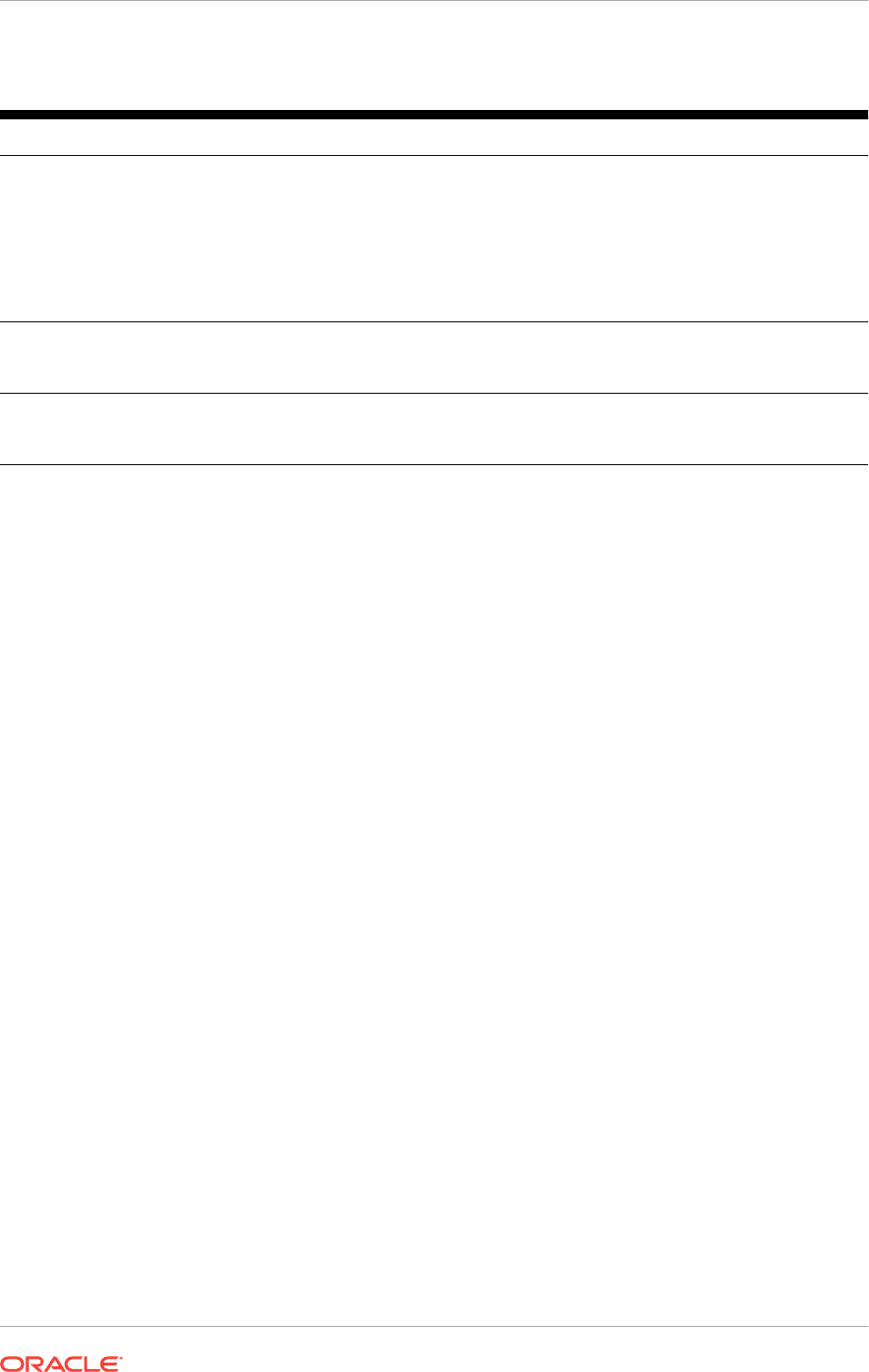
Table 1-1 (Cont.) Constraints of the REST Architectural Style
Constraint Description
Stateless interaction Uses a stateless communication protocol, typically Hypertext Transport Protocol
(HTTP). All requests must contain all of the information required for a particular
request. Session state is stored on the client only.
This interactive style improves:
• Visibility—Single request provides the full details of the request.
• Reliability—Eases recovery from partial failures.
• Scalability—Not having to store state enables the server to free resources quickly.
Cacheable Enables the caching of client responses. Responses must be identified as cacheable
or non-cacheable. Caching eliminates some interactions, improving efficiency,
scalability, and perceived performance.
Layered system Enables client to connect to an intermediary server rather than directly to the end
server (without the client's knowledge). Use of intermediary servers improve system
scalability by offering load balancing and shared caching.
What are RESTful Web Services?
RESTful web services are services that are built according to REST principles and, as
such, are designed to work well on the Web.
RESTful web services conform to the architectural style constraints defined in
Table 1-1. Typically, RESTful web services are built on the HTTP protocol and
implement operations that map to the common HTTP methods, such as GET, POST,
PUT, and DELETE to retrieve, create, update, and delete resources, respectively.
Standards Supported for RESTful Web Service
Development on WebLogic Server
The JAX-RS provides support for creating web services according to REST
architectural style. JAX-RS uses annotations to simplify the development of RESTful
web services. By simply adding annotations to your web service, you can define the
resources and the actions that can be performed on those resources. JAX-RS is part
of the Java EE 7 full profile, and is integrated with Contexts and Dependency Injection
(CDI) for the Java EE Platform (CDI), Enterprise JavaBeans (EJB) technology, and
Java Servlet technology.
WebLogic Server supports the following JAX-RS API and Reference Implementation
(RI):
• JAX-RS 2.0 Rev a
• Jersey 2.22.4
Chapter 1
What are RESTful Web Services?
1-2
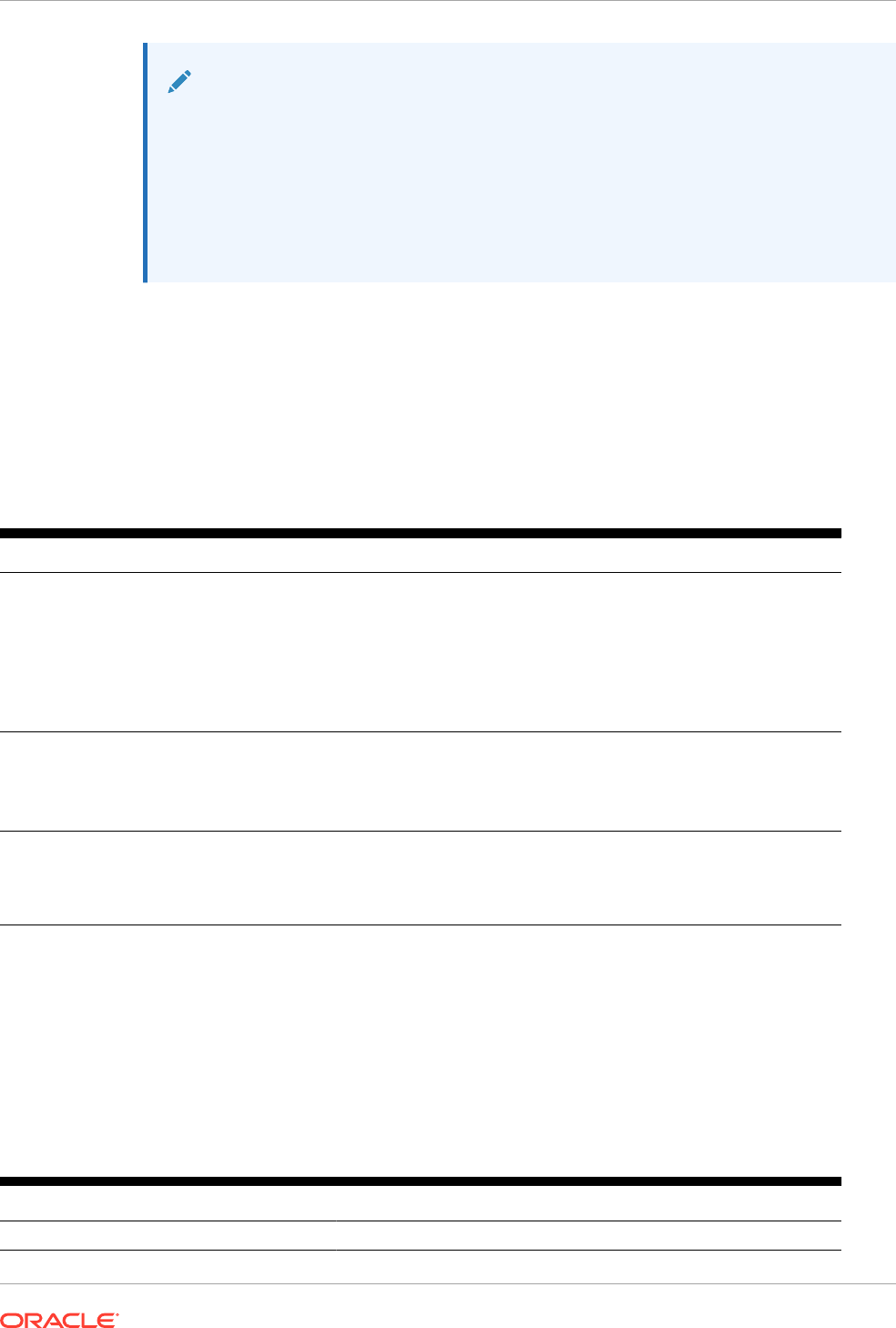
Note:
Jersey 2.x (JAX-RS 2.0 RI) support is provided by default in this release of
WebLogic Server. Registration as a shared library is no longer required.
The Jersey 1.x server-side APIs are no longer supported. You should use the
corresponding standard JAX-RS 2.0 or Jersey 2.x APIs instead. The Jersey 1.x
client API is deprecated. It is recommended that you update your RESTful client
applications to use the JAX-RS 2.0 client APIs at your earliest convenience.
The Jersey 2.x (JAX-RS 2.0 RI) includes the following functionality:
• Jersey
• JAX-RS API
• JSON processing and streaming
Table 1-2 lists key features delivered with Jersey 2.x (JAX-RS 2.0 RI).
Table 1-2 Key Features in Jersey 2.x (JAX-RS 2.0 RI)
Key Feature Description
Client API Communicate with RESTful web services in a standard way. The Client API facilitates
the consumption of a web service exposed via HTTP protocol and enables developers
to concisely and efficiently implement portable client-side solutions that leverage
existing and well established client-side HTTP connector implementations.
For complete details, see:
• Client API in Jersey 2.22 User Guide
• Accessing REST Resources with the JAX-RS Client API in Java EE 7 Tutorial
Asynchronous
communication
Invoke and process requests asynchronously.
For complete details, see:
• Asynchronous Services and Clients in the Jersey 2.22 User Guide
• Advanced Features of the Client API in Java EE 7 Tutorial
Filters and interceptors Using filters, modify inbound and outbound requests and responses., such as header
information. Using interceptors, modify entity input and output streams. Filters and
interceptors can be used on both the client and server side.
For complete details, see Filters and Interceptors in the Jersey 2.22 User Guide.
For more information about JAX-RS and samples, see Learn More About RESTful Web
Services.
Roadmap for Implementing RESTful Web Services
Review a roadmap of common tasks for developing, packaging and deploying, securing, and
monitoring RESTful web services and clients. These tasks are listed in Table 1-3.
Table 1-3 Roadmap for Implementing RESTful Web Services and Clients
Task More Information
Develop RESTful web services. Developing RESTful Web Services
Chapter 1
Roadmap for Implementing RESTful Web Services
1-3

Table 1-3 (Cont.) Roadmap for Implementing RESTful Web Services and Clients
Task More Information
Develop clients to invoke the RESTful web
services.
Summary of Tasks to Develop RESTful Web Service Clients
Package and deploy RESTful web services. • Packaging With an Application Subclass
• Packaging With a Servlet
• Packaging as a Default Resource
Secure RESTful web services. • Securing RESTful Web Services Using web.xml
• Securing RESTful Web Services Using SecurityContext
• Securing RESTful Web Services Using Java Security
Annotations
Test RESTful web services. Testing RESTful Web Services
Monitor RESTful web services. Monitoring RESTful Web Services and Clients
(Optional) Migrate existing applications from
Jersey 1.x to 2.x.
Migration Guide in Jersey 2.22 User Guide
Learn More About RESTful Web Services
Additional information about RESTful web services is available from resources such as
the Community Wiki for Project Jersey, jcp.org, the JSR-339 JAX-RS 2.0 Specification,
and more. These resources are listed in Table 1-4.
Table 1-4 Resources for More Information
Resource Link
Jersey User Guide Jersey 2.22 User Guide
Jersey API Javadoc Jersey 2.22 API Documentation
Community Wiki for Project
Jersey
https://jersey.github.io/
JSR-339 JAX-RS 2.0
Specification
https://jcp.org/en/jsr/detail?id=339
JAX-RS API Javadoc
https://jax-rs-spec.java.net/nonav/2.0-rev-a/apidocs/index.html
JAX-RS Project
https://jax-rs-spec.java.net/
RESTful Web Services
(JAX-RS) sample
Sample Application and Code Examples in Understanding Oracle WebLogic Server.
The Java EE 7 Tutorial—
Building RESTful Web
Services With JAX-RS
http://docs.oracle.com/javaee/7/tutorial/jaxrs.htm
"Representational State
Transfer (REST)" in
Architectural Styles and
the Design of Network-
based Software
Architectures (Dissertation
by Roy Fielding)
http://www.ics.uci.edu/~fielding/pubs/dissertation/
rest_arch_style.htm
Chapter 1
Learn More About RESTful Web Services
1-4

2
Developing RESTful Web Services
To develop Java EE web services that conform to the Representational State Transfer
(REST) architectural style using Java API for RESTful Web Services (JAX-RS), you perform
tasks such as defining the root resource class, mapping incoming HTTP requests to Java
methods, customizing media types for requests and responses, and more.
• About RESTful Web Service Development
• Defining the Root Resource Class
• Defining the Relative URI of the Root Resource and Subresources
• Mapping Incoming HTTP Requests to Java Methods
• Customizing Media Types for the Request and Response Messages
• Extracting Information From the Request Message
• Building Custom Response Messages
• Mapping HTTP Request and Response Entity Bodies Using Entity Providers
• Accessing the Application Context
• Building URIs
• Using Conditional GETs
• Accessing the WADL
• More Advanced RESTful Web Service Tasks
About RESTful Web Service Development
JAX-RS is a Java programming language API that uses annotations to simplify the
development of RESTful web services. JAX-RS annotations are runtime annotations. When
you deploy the Java EE application archive containing JAX-RS resource classes to WebLogic
Server, as described in Building, Packaging, and Deploying RESTful Web Service
Applications , the runtime configures the resources, generates the helper classes and
artifacts, and exposes the resource to clients.
The following sections provide more information about RESTful web service development:
• Summary of Tasks to Develop RESTful Web Services
• Example of a RESTful Web Service
For information about developing RESTful web services using Oracle JDeveloper, see
Creating RESTful Web Services and Clients in Developing Applications with Oracle
JDeveloper.
Summary of Tasks to Develop RESTful Web Services
Table 2-1 summarizes a subset of the tasks that are required to develop RESTful web service
using JAX-RS annotations. For more information about advanced tasks, see More Advanced
RESTful Web Service Tasks.
2-1

Note:
In addition to the development tasks described in Table 2-1, you may wish to
take advantage of features available with Jersey 2.x (JAX-RS 2.0 RI) when
developing your RESTful web services. For a list of key features, see
Table 1-2.
Table 2-1 Summary of Tasks to Develop RESTful Web Services
Task More Information
Define the root resource class. Defining the Root Resource Class
Define the relative URI of the root resource class and its
methods using the
@Path
annotation.
If you define the
@Path
annotation using a variable, you
can assign a value to it using the
@PathParam
annotation.
Defining the Relative URI of the Root Resource and
Subresources
Map incoming HTTP requests to your Java methods
using
@GET
,
@POST
,
@PUT
, or
@DELETE
, to get, create,
update, or delete representations of the resource,
respectively.
Mapping Incoming HTTP Requests to Java Methods
Customize the request and response messages, as
required, to specify the MIME media types of
representations a resource can produce and consume.
Customizing Media Types for the Request and
Response Messages
Extract information from the request. Extracting Information From the Request Message
Build custom response messages to customize
response codes or include additional metadata.
Building Custom Response Messages
Access information about the application deployment
context or the context of individual requests.
Accessing the Application Context
Build new or extend existing resource URIs. Building URIs
Evaluate one or more preconditions before processing a
GET request, potentially reducing bandwidth and
improving server performance.
Using Conditional GETs
Access the WADL. Accessing the WADL
Optionally, create a class that extends
javax.ws.rs.core.Application
to define the
components of a RESTful web service application
deployment and provides additional metadata.
Packaging With an Application Subclass
Secure your RESTful web services. Securing RESTful Web Services and Clients
Example of a RESTful Web Service
Example 2-1 provides a simple example of a RESTful web service. In this example:
• The
helloWorld
class is a resource with a relative URI path defined as
/
helloworld
. At runtime, if the context root for the WAR file is defined as
http://
examples.com
, the full URI to access the resource is
http://examples.com/
helloworld
. See Defining the Relative URI of the Root Resource and
Subresources.
Chapter 2
About RESTful Web Service Development
2-2

• The
sayHello
method supports the HTTP GET method. See Mapping Incoming HTTP
Requests to Java Methods.
• The
sayHello
method produces content of the MIME media type
text/plain
. See
Customizing Media Types for the Request and Response Messages.
Additional examples are listed in Learn More About RESTful Web Services.
Example 2-1 Simple RESTful Web Service
package samples.helloworld;
import javax.ws.rs.GET;
import javax.ws.rs.Path;
import javax.ws.rs.Produces;
// Specifies the path to the RESTful service
@Path("/helloworld")
public class helloWorld {
// Specifies that the method processes HTTP GET requests
@GET
@Produces("text/plain")
public String sayHello() {
return "Hello World!";
}
}
Defining the Root Resource Class
A root resource class is a Plain Old Java Object (POJO) that meets specific annotation
requirements. The root resource class must satisfy one or both of the following statements:
• Is annotated with
@Path
. See Defining the Relative URI of the Root Resource and
Subresources.
• Has at least one method annotated with
@Path
or with a request method designator, such
as
@GET
,
@POST
,
@PUT
, or
@DELETE
. A resource method is a method in the resource class
that is annotated using a request method designator. See Mapping Incoming HTTP
Requests to Java Methods.
Defining the Relative URI of the Root Resource and
Subresources
Add the
javax.ws.rs.Path
annotation at the class level of the resource to define the relative
URI of the RESTful web service. Such classes are referred to as root resource classes. You
can add
@Path
on methods of the root resource class as well, to define subresources to group
specific functionality.
The following sections describe how to define the relative URI of the root resource and
subresources:
• How to Define the Relative URI of the Resource Class (@Path)
• How to Define the Relative URI of Subresources (@Path)
• What Happens at Runtime: How the Base URI is Constructed
Chapter 2
Defining the Root Resource Class
2-3

How to Define the Relative URI of the Resource Class (@Path)
The
@Path
annotation defines the relative URI path for the resource, and can be
defined as a constant or variable value (referred to as "URI path template"). You can
add the
@Path
annotation at the class or method level.
To define the URI as a constant value, pass a constant value to the
@Path
annotation.
Preceding and ending slashes (/) are optional.
In Example 2-2, the relative URI for the resource class is defined as the constant
value,
/helloworld
.
Example 2-2 Defining the Relative URI as a Constant Value
package samples.helloworld;
import javax.ws.rs.Path;
...
// Specifies the path to the RESTful service
@Path("/helloworld")
public class helloWorld {. . .}
To define the URI as a URI path template, pass one or more variable values enclosed
in braces in the
@Path
annotation. Then, you can use the
javax.ws.rs.PathParam
annotation to extract variable information from the request URI, defined by the
@Path
annotation, and initialize the value of the method parameter, as described in How to
Extract Variable Information from the Request URI (@PathParam).
In Example 2-3, the relative URI for the resource class is defined using a variable,
enclosed in braces, for example,
/users/{username}
.
Example 2-3 Defining the Relative URI as a Variable Value
package samples.helloworld;
import javax.ws.rs.Path;
...
// Specifies the path to the RESTful service
@Path("/users/{username}")
public class helloWorld {. . .}
}
To further customize the variable, you can override the default regular expression of
"[^/]+?" by specifying the expected regular expression as part of the variable definition.
For example:
@Path("users/{username: [a-zA-Z][a-zA-Z_0-9]}")
In this example, the
username
variable will match only user names that begin with one
uppercase or lowercase letter followed by zero or more alphanumeric characters or
the underscore character. If the username does not match the requirements, a
404
(Not Found)
response will be sent to the client.
See the
@Path
annotation in the Java EE 7 Specification APIs.
Chapter 2
Defining the Relative URI of the Root Resource and Subresources
2-4

How to Define the Relative URI of Subresources (@Path)
Add the
javax.ws.rs.Path
annotation to the method of a resource to define a subresource.
Subresources enable users to group specific functionality for a resource.
In Example 2-4, if the request path of the URI is
users/list
, then the
getUserList
subresource method is matched and a list of users is returned.
Example 2-4 Defining a Subresource
package samples.helloworld;
import javax.ws.rs.GET;
import javax.ws.rs.Path;
// Specifies the path to the RESTful service
@Path("/users")
public class UserResource {
. . .
@GET
@Path("/list")
public String getUserList() {
...
}
}
What Happens at Runtime: How the Base URI is Constructed
The base URI is constructed as follows:
http://myHostName/contextPath/
servletURI
/
resourceURI
•
myHostName
—DNS name mapped to the Web Server. You can replace this with
host:port
which specifies the name of the machine running WebLogic Server and the
port used to listen for requests.
•
contextPath
—Name of the standalone Web application. The Web application name is
specified in the
META-INF/application.xml
deployment descriptor in an EAR file or the
weblogic.xml
deployment descriptor in a WAR file. If not specified, it defaults to the
name of the WAR file minus the
.war
extension. See context-root in Developing Web
Applications, Servlets, and JSPs for Oracle WebLogic Server.
•
servletURI
—Base URI for the servlet context path. This path is configured as part of the
packaging options defined in Table 4-1. Specifically, you can define the servlet context
path by:
– Updating the
web.xml
deployment descriptor to define the servlet mapping.
– Adding a
javax.ws.rs.ApplicationPath
annotation to the class that extends
javax.ws.rs.core.Application
, if defined.
If the servlet context path is configured using both options above, then the servlet
mapping takes precedence. If you do not configure the servlet context path in your
configuration using either of the options specified above, the WebLogic Server provides a
default RESTful web service application context path,
resources
. See Building,
Packaging, and Deploying RESTful Web Service Applications .
Chapter 2
Defining the Relative URI of the Root Resource and Subresources
2-5
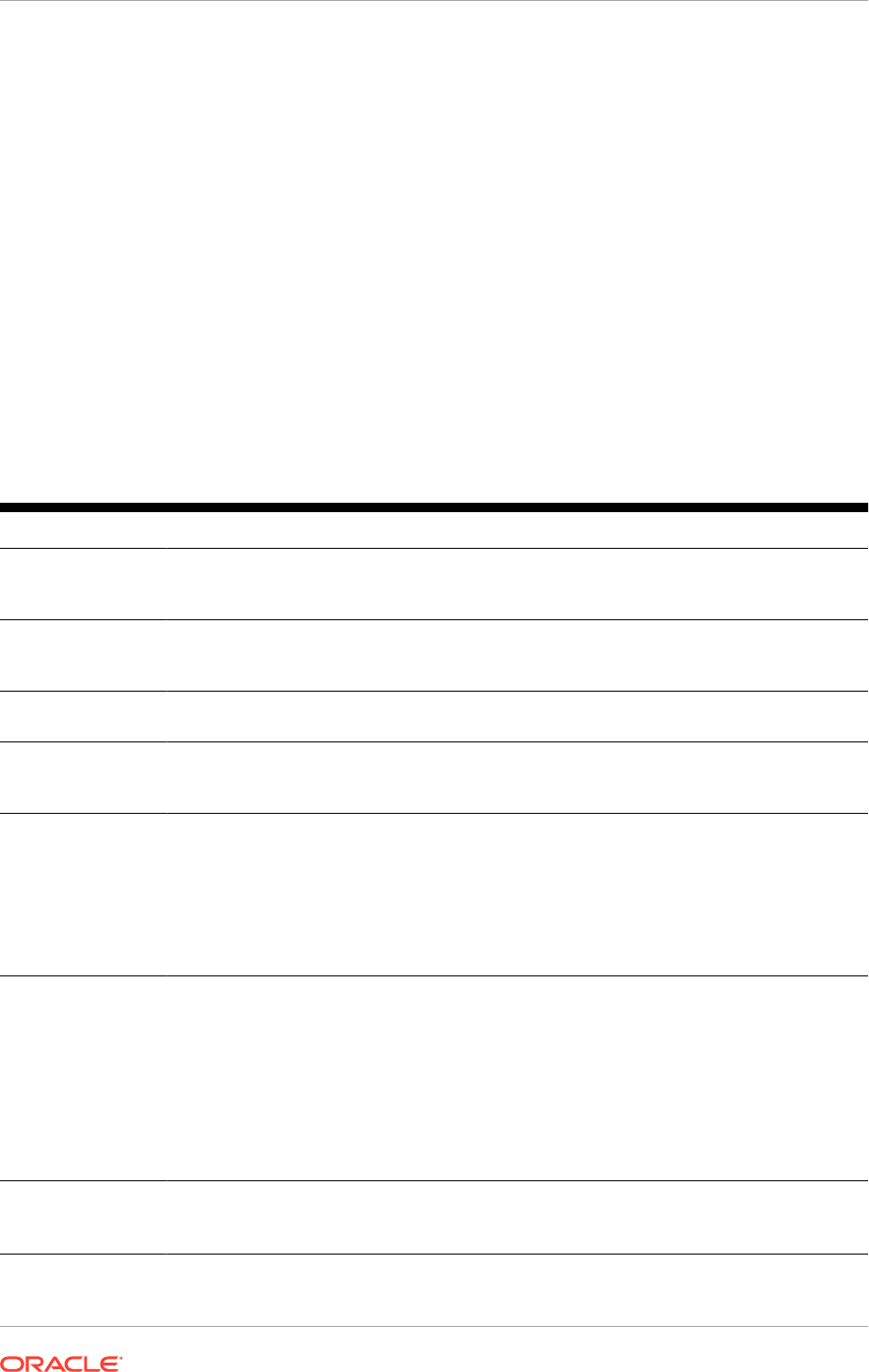
•
resourceURI
—
@Path
value specified for the resource or subresource. This path
may be constructed from multiple resources and subresources
@Path
values.
In Example 2-2, at runtime, if the context path for the WAR file is defined as
rest
and
the default URI for the servlet (
resources
) is in effect, the base URI to access the
resource is
http://myServer:7001/rest/resources/helloworld
.
In Example 2-3, at runtime, the base URI will be constructed based on the value
specified for the variable. For example, if the user entered
johnsmith
as the
username, the base URI to access the resource is
http://myServer:7001/rest/
resources/users/johnsmith
.
Mapping Incoming HTTP Requests to Java Methods
JAX-RS uses Java annotations to map an incoming HTTP request to a Java method.
Table 2-2 lists the annotations available, which map to the similarly named HTTP
methods.
Table 2-2 javax.ws.rs Annotations for Mapping HTTP Requests to Java Methods
Annotation Description Idempotent
@GET
Transmits a representation of the resource identified by the URI to the client.
The format might be HTML, plain text, JPEG, and so on. See How to
Transmit a Representation of the Resource (@GET).
Yes
@PUT
Creates or updates the representation of the specified resource identified by
the URI. See How to Create or Update the Representation of the Resource
(@PUT).
Yes
@DELETE
Deletes the representation of the resource identified by the URI. See How to
Delete a Representation of the Resource (@DELETE).
Yes
@POST
Creates, updates, or performs an action on the representation of the
specified resource identified by the URI. See How to Create, Update, or
Perform an Action on a Representation of the Resource (@POST).
No
@HEAD
Returns the response headers only, and not the actual resource (that is, no
message body). This is useful to save bandwidth to check characteristics of a
resource without actually downloading it. See the
@HEAD
annotation in the
Java EE 7 Specification APIs.
The
HEAD
method is implemented automatically if not implemented explicitly.
In this case, the runtime invokes the implemented
GET
method, if present,
and ignores the response entity, if set.
Yes
@OPTIONS
Returns the communication options that are available on the request/
response chain for the specified resource identified by the URI. The
Allow
response header will be set to the set of HTTP methods supported by the
resource and the WADL file is returned. See the
@OPTIONS
annotation in the
Java EE 7 Specification APIs.
The
OPTIONS
method is implemented automatically if not implemented
explicitly. In this case, the
Allow
response header is set to the set of HTTP
methods supported by the resource and the WADL describing the resource
is returned.
Yes
@HttpMethod
Indicates that the annotated method should be used to handle HTTP
requests. See the
@HttpMethod
annotation in the Java EE 7 Specification
APIs.
N/A
Chapter 2
Mapping Incoming HTTP Requests to Java Methods
2-6
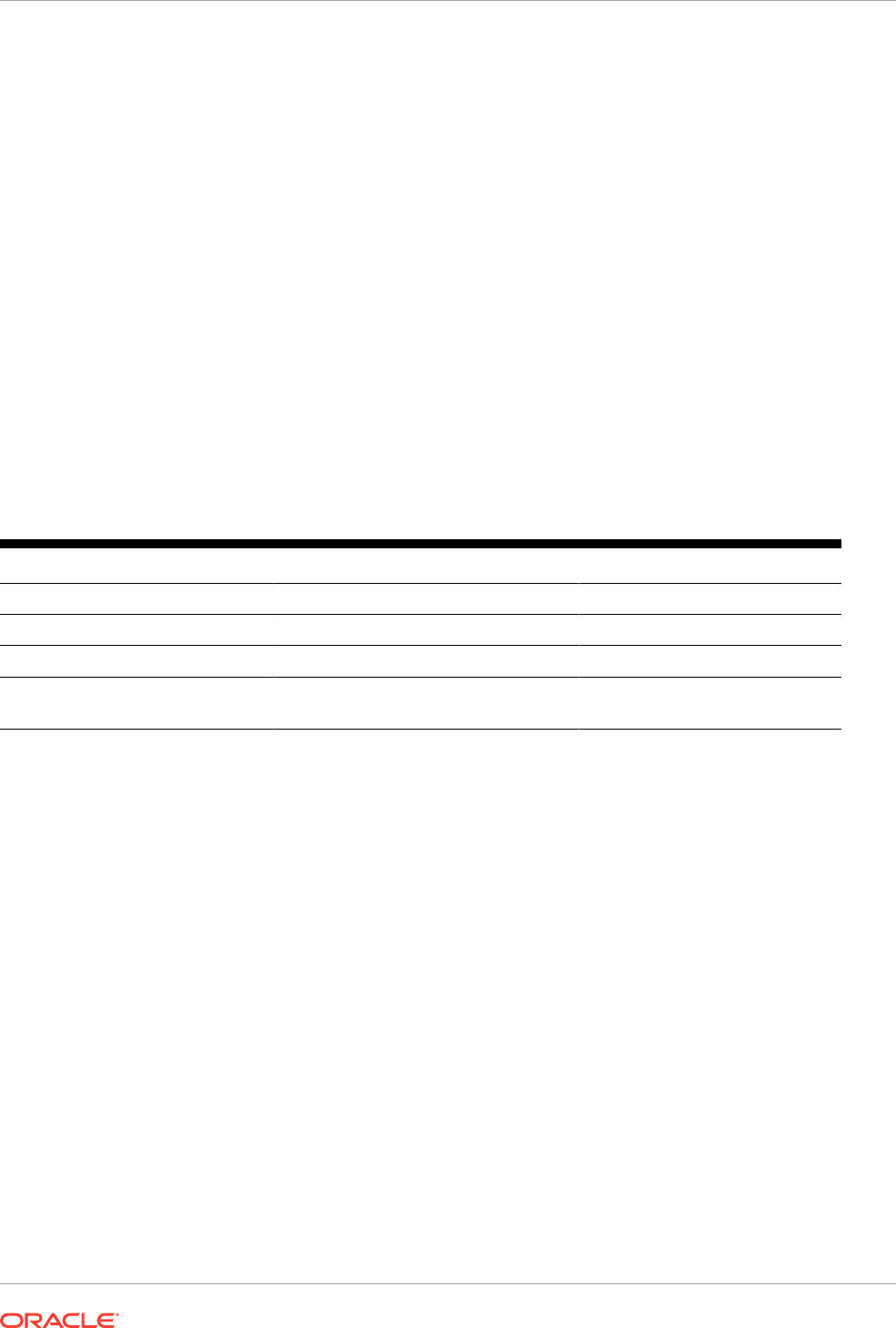
The following sections provide more information about the JAX-RS annotations used for
mapping HTTP requests to Java methods.
• About the Jersey Bookmark Sample
• How to Transmit a Representation of the Resource (@GET)
• How to Create or Update the Representation of the Resource (@PUT)
• How to Delete a Representation of the Resource (@DELETE)
• How to Create, Update, or Perform an Action on a Representation of the Resource
(@POST)
About the Jersey Bookmark Sample
The examples referenced in the following sections are excerpted from the bookmark sample
that is delivered with Jersey 2.x (JAX-RS 2.0 RI). The bookmark sample provides a Web
application that maintains users and the browser bookmarks that they set.
The following table summarizes the resource classes in the sample, their associated URI
path, and the HTTP methods demonstrated by each class.
Table 2-3 About the Jersey Bookmark Sample
Resource Class URI Path HTTP Methods Demonstrated
UsersResource /users
GET
UserResource /users/{userid}
GET, PUT, DELETE
BookmarksResource /users/{userid}/bookmarks
GET, POST
BookmarkResource /users/{userid}/bookmarks/
{bmid
}
GET. PUT, DELETE
The bookmark sample, and other Jersey samples, can be accessed in one of the following
ways:
• Accessing the bookmark sample at
https://repo1.maven.org/maven2/org/glassfish/
jersey/examples/bookmark/
• Browsing the bookmark sample source code on GitHub:
https://github.com/jersey/
jersey/tree/master/examples/bookmark
• Browsing the Maven repositories for all Jersey examples, including a WebLogic Server-
specific example bundle for each version, at:
https://repo1.maven.org/maven2/org/
glassfish/jersey/bundles/jersey-examples/
How to Transmit a Representation of the Resource (@GET)
The
javax.ws.rs.GET
annotation transmits a representation of the resource identified by the
URI to the client. The format or the representation returned in the response entity-body might
be HTML, plain text, JPEG, and so on. See the
@GET
annotation in the Java EE 7
Specification APIs.
In Example 2-5, the annotated Java method,
getBookmarkAsJsonArray
, from the
BookmarksResource
class in the Jersey bookmark sample, will process HTTP GET requests.
See About the Jersey Bookmark Sample.
Chapter 2
Mapping Incoming HTTP Requests to Java Methods
2-7

Example 2-5 Mapping the HTTP GET Request to a Java Method (BookmarksResource Class)
import javax.ws.rs.GET;
import javax.ws.rs.Produces;
import javax.ws.rs.Path;
...
public class BookmarksResource {
...
@Path("{bmid: .+}")
public BookmarkResource getBookmark(@PathParam("bmid") String bmid) {
return new BookmarkResource(uriInfo, em,
userResource.getUserEntity(), bmid);
}
@GET
@Produces(MediaType.APPLICATION_JSON)
public JSONArray getBookmarksAsJsonArray() {
JSONArray uriArray = new JSONArray();
for (BookmarkEntity bookmarkEntity : getBookmarks()) {
UriBuilder ub = uriInfo.getAbsolutePathBuilder();
URI bookmarkUri = ub.
path(bookmarkEntity.getBookmarkEntityPK().getBmid()).
build();
uriArray.put(bookmarkUri.toASCIIString());
}
return uriArray;
}
...
}
In Example 2-6, the annotated Java method,
getBookmark
, from the
BookmarkResource
class in the Jersey bookmark sample, will process HTTP GET requests. This example
shows how to process the JSON object that is returned. See About the Jersey
Bookmark Sample.
Example 2-6 Mapping the HTTP GET Request to a Java Method (BookmarkResource Class)
import javax.ws.rs.GET;
import javax.ws.rs.Produces;
import javax.ws.rs.Path;
...
public class BookmarkResource {
...
@GET
@Produces(MediaType.APPLICATION_JSON)
public JSONObject getBookmark() {
return asJson();
}
...
public JSONObject asJson() {
try {
return new JSONObject()
.put("userid", bookmarkEntity.getBookmarkEntityPK().getUserid())
.put("sdesc", bookmarkEntity.getSdesc())
.put("ldesc", bookmarkEntity.getLdesc())
.put("uri", bookmarkEntity.getUri());
} catch (JSONException je){
return null;
Chapter 2
Mapping Incoming HTTP Requests to Java Methods
2-8

}
}
}
How to Create or Update the Representation of the Resource (@PUT)
The
javax.ws.rs.PUT
annotation creates or updates the representation of the specified
resource identified by the URI. See the
@PUT
annotation in the Java EE 7 Specification APIs.
In Example 2-7, the annotated Java method,
putBookmark
, from the
BookmarkResource
class
in the Jersey bookmark sample, will process HTTP PUT requests and update the specified
bookmark. See About the Jersey Bookmark Sample.
Example 2-7 Mapping the HTTP PUT Request to a Java Method
import javax.ws.rs.PUT;
import javax.ws.rs.Produces;
import javax.ws.rs.Path;
...
public class BookmarkResource {
...
@PUT
@Consumes(MediaType.APPLICATION_JSON)
public void putBookmark(JSONObject jsonEntity) throws JSONException {
bookmarkEntity.setLdesc(jsonEntity.getString("ldesc"));
bookmarkEntity.setSdesc(jsonEntity.getString("sdesc"));
bookmarkEntity.setUpdated(new Date());
TransactionManager.manage(new Transactional(em) {
public void transact() {
em.merge(bookmarkEntity);
}});
}
}
How to Delete a Representation of the Resource (@DELETE)
The
javax.ws.rs.DELETE
annotation deletes the representation of the specified resource
identified by the URI. The response entity-body may return a status message or may be
empty. See the
@DELETE
annotation in the Java EE 7 Specification APIs.
In Example 2-8, the annotated Java method,
deleteBookmark
, from the
BookmarkResource
class in the Jersey bookmark sample, will process HTTP DELETE requests, and delete the
specified bookmark. See About the Jersey Bookmark Sample.
Example 2-8 Mapping the HTTP DELETE Request to a Java Method
import javax.ws.rs.DELETE;
import javax.ws.rs.Produces;
import javax.ws.rs.Path;
Chapter 2
Mapping Incoming HTTP Requests to Java Methods
2-9

...
public class BookmarkResource {
...
@DELETE
public void deleteBookmark() {
TransactionManager.manage(new Transactional(em) {
public void transact() {
UserEntity userEntity = bookmarkEntity.getUserEntity();
userEntity.getBookmarkEntityCollection().remove(bookmarkEntity);
em.merge(userEntity);
em.remove(bookmarkEntity);
}});
}
}
How to Create, Update, or Perform an Action on a Representation of
the Resource (@POST)
The
javax.ws.rs.POST
annotation creates, updates, or performs an action on the
representation of the specified resource identified by the URI. See the
@POST
annotation in the Java EE 7 Specification APIs.
In Example 2-9, the annotated Java method,
postForm
, from the
BookmarksResource
class in the Jersey bookmark sample, will process HTTP POST requests, and update
the specified information. See About the Jersey Bookmark Sample.
Example 2-9 Mapping the HTTP POST Request to a Java Method
import javax.ws.rs.POST;
import javax.ws.rs.Produces;
...
public class BookmarksResource {
...
@POST
@Consumes(MediaType.APPLICATION_JSON)
public Response postForm(JSONObject bookmark) throws JSONException {
final BookmarkEntity bookmarkEntity = new
BookmarkEntity(getBookmarkId(bookmark.getString("uri")),
userResource.getUserEntity().getUserid());
bookmarkEntity.setUri(bookmark.getString("uri"));
bookmarkEntity.setUpdated(new Date());
bookmarkEntity.setSdesc(bookmark.getString("sdesc"));
bookmarkEntity.setLdesc(bookmark.getString("ldesc"));
userResource.getUserEntity().getBookmarkEntityCollection().add(bookmarkEntity);
TransactionManager.manage(new Transactional(em) {
public void transact() {
Chapter 2
Mapping Incoming HTTP Requests to Java Methods
2-10

em.merge(userResource.getUserEntity());
}});
URI bookmarkUri = uriInfo.getAbsolutePathBuilder().
path(bookmarkEntity.getBookmarkEntityPK().getBmid()).
build();
return Response.created(bookmarkUri).build();
}
}
Customizing Media Types for the Request and Response
Messages
To customize the media types for request and response messages, add the
javax.ws.rs.Consumes
or
javax.ws.rs.Produces
annotation at the class level of the
resource. This task is described in the following sections:
• How To Customize Media Types for the Request Message (@Consumes)
• How To Customize Media Types for the Response Message (@Produces)
• What Happens At Runtime: How the Resource Method Is Selected for Response
Messages
How To Customize Media Types for the Request Message (@Consumes)
The
javax.ws.rs.Consumes
annotation enables you to specify the MIME media types of
representations a resource can consume that were sent from the client. The
@Consumes
annotation can be specified at both the class and method levels and more than one media
type can be declared in the same
@Consumes
declaration.
If there are no methods in a resource that can consume the specified MIME media types, the
runtime returns an HTTP
415 Unsupported Media Type
error.
See the
@Consumes
annotation in the Java EE 7 Specification APIs.
In Example 2-10, the
@Consumes
annotation defined for the Java class,
helloWorld
, specifies
that the class produces messages using the
text/plain
MIME media type.
Example 2-10 Customizing the Media Types for the Request Message Using @Consumes
package samples.consumes;
import javax.ws.rs.Consumes;
import javax.ws.rs.POST;
import javax.ws.rs.Path;
...
@Path("/helloworld")
public class helloWorld {
...
@POST
@Consumes("text/plain")
public void postMessage(String message) {
// Store the message
}
}
Chapter 2
Customizing Media Types for the Request and Response Messages
2-11

How To Customize Media Types for the Response Message
(@Produces)
The
javax.ws.rs.Produces
annotation enables you to specify the MIME media types
of representations a resource can produce and send back to the client. The
@Produces
annotation can be specified at both the class and method levels and more than one
media type can be declared in the same
@Produces
declaration.
If there are no methods in a resource that can produce the specified MIME media
types, the runtime returns an HTTP
406 Not Acceptable
error.
See the
@Produces
annotation in the Java EE 7 Specification APIs.
In Example 2-11, the
@Produces
annotation specified for the Java class,
SomeResource
,
specifies that the class produces messages using the
text/plain
MIME media type.
The
doGetAsPlainText
method defaults to the MIME media type specified at the class
level. The
doGetAsHtml
method overrides the class-level setting and specifies that the
method produces HTML rather than plain text.
Example 2-11 Customizing the Media Types for the Response Using @Produces
package samples.produces;
import javax.ws.rs.Produces;
import javax.ws.rs.Path;
@Path("/myResource")
@Produces("text/plain")
public class SomeResource {
@GET
public String doGetAsPlainText() { ... }
@GET
@Produces("text/html")
public String doGetAsHtml() { ... }
}
What Happens At Runtime: How the Resource Method Is Selected for
Response Messages
If a resource class is capable of producing more that one MIME media type, then the
resource method that is selected corresponds to the acceptable media type declared
in the
Accept
header of the HTTP request. In Example 2-11, if the
Accept
header is
Accept: text/html
, then the
doGetAsPlainText
method is invoked.
If multiple MIME media types are included in the
@Produces
annotation and both are
acceptable to the client, the first media type specified is used. In Example 2-11, if the
Accept
header is
Accept: application/html, application/text
, then the
doGetAsHtml
method is invoked and the
application/html
MIME media type is used
as it is listed first in the list.
Chapter 2
Customizing Media Types for the Request and Response Messages
2-12

Extracting Information From the Request Message
The
javax.ws.rs
package defines a set of annotations that enable you extract information
from the request message to inject into parameters of your Java method. These annotations
are listed and described in Table 2-4.
Table 2-4 javax.ws.rs Annotations for Extracting Information From the Request Message
Annotation Description
@BeanParam
Inject aggregated request parameters into a single bean. See the
@BeanParam
annotation in
the Java EE 7 Specification APIs.
For additional usage information, see Parameter Annotations (@*Param) in the Jersey 2.22
User Guide.
@CookieParam
Extract information from the HTTP cookie-related headers to initialize the value of a method
parameter. See the
@CookieParam
annotation in the Java EE 7 Specification APIs.
@DefaultValue
Define the default value of the request metadata that is bound using one of the following
annotations:
@CookieParam
,
@FormParam
,
@HeaderParam
,
@MatrixParam
,
@PathParam
,
or
@QueryParam
. See How to Define the DefaultValue (@DefaultValue).
@Encoded
Enable encoding of a parameter value that is bound using one of the following annotations:
@FormParam
,
@MatrixParam
,
@PathParam
, or
@QueryParam
. See Enabling the Encoding
Parameter Values (@Encoded).
@FormParam
Extract information from an HTML form of the type
application/x-www-form-
urlencoded
. See the
@FormParam
annotation in the Java EE 7 Specification APIs.
@HeaderParam
Extract information from the HTTP headers to initialize the value of a method parameter.
See the
@HeaderParam
annotation in the Java EE 7 Specification APIs.
@MatrixParam
Extract information from the URI path segments to initialize the value of a method
parameter. See the
@MatrixParam
annotation in the Java EE 7 Specification APIs.
@PathParam
Define the relative URI as a variable value (referred to as "URI path template"). See How to
Extract Variable Information from the Request URI (@PathParam).
@QueryParam
Extract information from the query portion of the request URI to initialize the value of a
method parameter. See How to Extract Request Parameters (@QueryParam).
How to Extract Variable Information from the Request URI (@PathParam)
Add the
javax.ws.rs.PathParam
annotation to the method parameter of a resource to extract
the variable information from the request URI and initialize the value of the method
parameter. You can define a default value for the variable value using the
@DefaultValue
annotation, as described in How to Define the DefaultValue (@DefaultValue).
In Example 2-12, the
@PathParam
annotation assigns the value of the
username
variable that
is defined as part of the URI path by the
@Path
annotation to the
userName
method parameter.
Example 2-12 Extracting Variable Information From the Request URI
package samples.helloworld;
import javax.ws.rs.GET;
import javax.ws.rs.Path;
import javax.ws.rs.Produces;
import javax.ws.rs.PathParam;
Chapter 2
Extracting Information From the Request Message
2-13

// Specifies the path to the RESTful service
@Path("/users")
public class helloWorld {
. . .
@GET
@Path("/{username}")
@Produces("text/xml")
public String getUser(@PathParam("username") String userName) {
...
}
}
How to Extract Request Parameters (@QueryParam)
Add the
javax.ws.rs.QueryParam
annotation to the method parameter of a resource
to extract information from the query portion of the request URI and initialize the value
of the method parameter.
The type of the annotated method parameter can be any of the following:
• Primitive type (
int
,
char
,
byte
, and so on)
• User-defined type
• Constructor that accepts a single String argument
• Static method named
valueOf
or
fromString
that accepts a single String
argument (for example,
integer.valueOf(String)
)
•
List<T>
,
Set<T>
, or
SortedSet<T>
If the
@QueryParam
annotation is specified but the associated query parameter is not
present in the request, then the parameter value will set as an empty collection for
List
,
Set
or
SortedSet
, the Java-defined default for primitive types, and NULL for all
other object types. Alternatively, you can define a default value for the parameter using
the
@DefaultValue
annotation, as described in How to Define the DefaultValue
(@DefaultValue).
See the
@QueryParam
annotation in the Java EE 7 Specification APIs.
In Example 2-13, if the
step
query parameter exists in the query component of the
request URI, the value will be assigned to the
step
method parameter as an integer
value. If the value cannot be parsed as an integer value, then a
400 (Client Error)
response is returned. If the
step
query parameter does not exist in the query
component of the request URI, then the value is set to NULL.
Example 2-13 Extracting Request Parameters (@QueryParam)
import javax.ws.rs.Path;
import javax.ws.rs.GET;
import javax.ws.rs.QueryParam;
...
@Path("smooth")
@GET
public Response smooth(@QueryParam("step") int step)
{ ... }
}
Chapter 2
Extracting Information From the Request Message
2-14

How to Define the DefaultValue (@DefaultValue)
Add the
javax.ws.rs.DefaultValue
annotation to define the default value of the request
metadata that is bound using one of the following annotations:
@CookieParam
,
@FormParam
,
@HeaderParam
,
@MatrixParam
,
@PathParam
, or
@QueryParam
. See the
@DefaultValue
annotation in the Java EE 7 Specification APIs.
In Example 2-14, if the
step
query parameter does not exist in the query component of the
request URI, the default value of 2 will be assigned to the
step
parameter.
Example 2-14 Defining the Default Value (@DefaultValue)
import javax.ws.rs.Path;
import javax.ws.rs.GET;
import javax.ws.rs.QueryParam;
...
@Path("smooth")
@GET
public Response smooth(@DefaultValue("2") @QueryParam("step") int step)
{ ... }
}
Enabling the Encoding Parameter Values (@Encoded)
Add the
javax.ws.rs.Encoded
annotation at the class or method level to enable the encoding
of a parameter value that is bound using one of the following annotations:
@FormParam
,
@MatrixParam
,
@PathParam
, or
@QueryParam
. If specified at the class level, parameters for all
methods in the class will be encoded. See the
@Encoded
annotation in the Java EE 7
Specification APIs.
In Example 2-15, the
@Encoded
annotation enables the encoding of parameter values bound
using the
@PathParam
annotation.
Example 2-15 Encoding Parameter Values
package samples.helloworld;
import javax.ws.rs.GET;
import javax.ws.rs.Path;
import javax.ws.rs.Produces;
import javax.ws.rs.PathParam;
import javax.ws.rs.Encoded;
// Specifies the path to the RESTful service
@Path("/users")
public class helloWorld {
. . .
@GET
@Path("/{username}")
@Produces("text/xml")
@Encoded
public String getUser(@PathParam("username") String userName) {
...
Chapter 2
Extracting Information From the Request Message
2-15
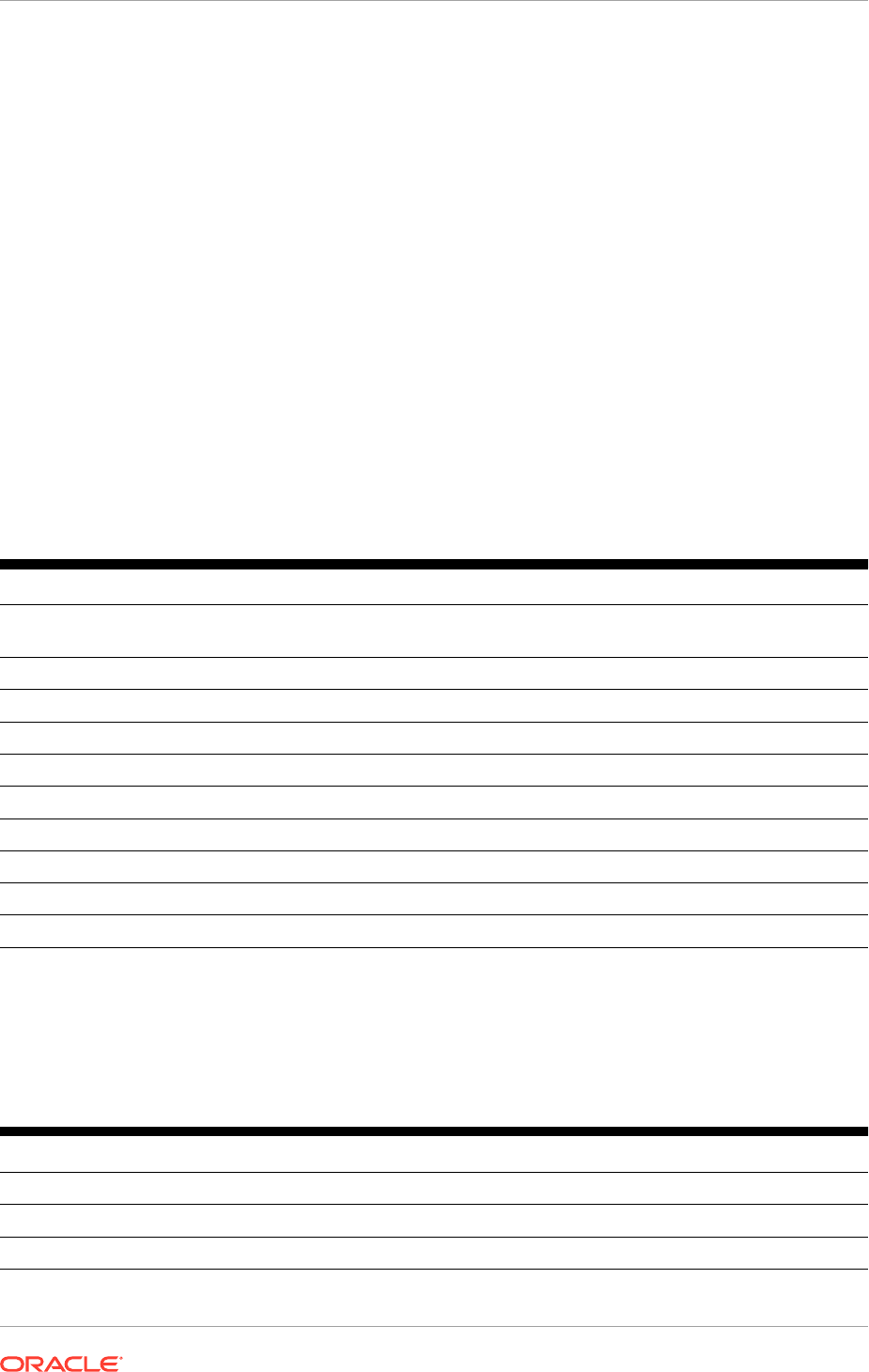
}
}
Building Custom Response Messages
Instead of the default response codes, you can customize the response codes
returned or include additional metadata information in the response.
By default, JAX-RS responds to HTTP requests using the default response codes
defined in the HTTP specification, such as
200 OK
for a successful GET request and
201 CREATED
for a successful PUT request.
For example, you might want to include the
Location
header to specify the URI to the
newly created resource. You can modify the response message returned using the
javax.ws.rs.core.Response
class.
An application can extend the
Response
class directly or use one of the static
Response methods to create a javax.ws.rs.core.Response.ResponseBuilder instance
and build the Response instance. The methods you can use are defined in Table 2-5.
For more information, see the
Response
methods in the Java EE 7 Specification APIs.
Table 2-5 Creating a Response Instance Using the ResponseBuilder Class
Method Description
created()
Creates a new
ResponseBuilder
instance and sets the
Location
header to the
specified value.
fromResponse()
Creates a new
ResponseBuilder
instance and copies an existing response.
noContent()
Creates a new
ResponseBuilder
instance and defines an empty response.
notAcceptable()
Creates a new
ResponseBuilder
instance and defines a unacceptable response.
notModified()
Creates a new
ResponseBuilder
instance and returns a not-modified status.
ok()
Creates a new
ResponseBuilder
instance and returns an OK status.
seeOther()
Creates a new
ResponseBuilder
instance for a redirection.
serverError()
Creates a new
ResponseBuilder
instance and returns a server error status.
status()
Creates a new
ResponseBuilder
instance and returns the specified status.
temporaryRedirect()
Creates a new
ResponseBuilder
instance for a temporary redirection.
Once you create a
ResponseBuilder
instance, you can call the methods defined in
Table 2-6 to build a custom response. Then, call the
build()
method to create the final
Response
instance. See the
Response.ResponseBuilder
methods in the Java EE 7
Specification APIs.
Table 2-6 ResponseBuilder Methods for Building a Custom Response
Method Description
allow()
Sets the list of allowed methods for the resource.
build()
Creates the Response instance from the current
ResponseBuilder
instance.
cacheControl()
Sets the cache control.
Chapter 2
Building Custom Response Messages
2-16
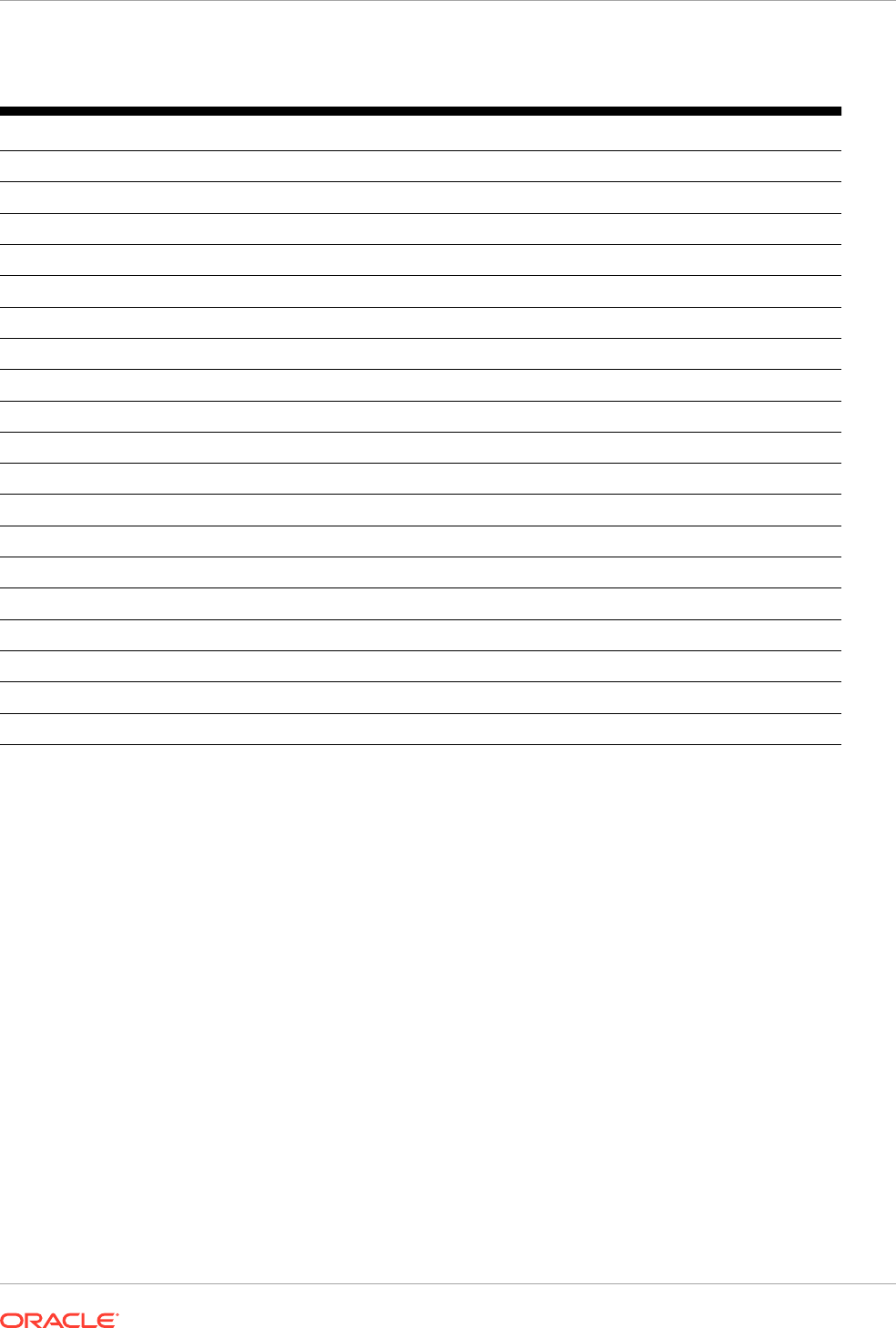
Table 2-6 (Cont.) ResponseBuilder Methods for Building a Custom Response
Method Description
clone()
Create a copy of the
ResponseBuilder
to preserve its state.
contentLocation()
Sets the content location.
cookie()
Add cookies to the response.
encoding()
Sets the message entity content encoding.
entity()
Defines the entity.
expires()
Sets the expiration date.
header()
Adds a header to the response.
language()
Sets the language.
lastModified()
Set the last modified date.
link()
Adds a link header.
links()
Adds one or more link headers.
location()
Sets the location.
newInstance()
Creates a new
ResponseBuilder
instance.
replaceAll()
Replaces all existing headers with the newly supplied headers.
status()
Sets the status.
tag()
Sets an entity tag.
type()
Sets the response media type.
variant()
Set representation metadata.
variants()
Add a
Vary
header that lists the available variants.
Example 2-16 shows how to build a
Response
instance using
ResponseBuilder
. In this
example, the standard status code of
200 OK
is returned and the media type of the response
is set to
text/html
. A call to the
build()
method creates the final
Response
instance.
Example 2-16 Building a Custom Response
import javax.ws.rs.Path;
import javax.ws.rs.GET;
import javax.ws.rs.PathParam;
import javax.ws.rs.core.Response;
import javax.ws.rs.core.ResponseBuilder;
...
@Path("/content")
public class getDocs {
@GET
@Path("{id}")
public Response getHTMLDoc(@PathParm("id") int docId)
{
Document document = ...;
ResponseBuilder response = Response.ok(document);
response.type("text/html");
return response.build();
}
}
Chapter 2
Building Custom Response Messages
2-17

If you wish to build an HTTP response using a generic type, to avoid type erasure at
runtime you need to create a
javax.ws.rs.core.GenericEntity
object to preserve the
generic type. See the
GenericEntity
methods in the Java EE 7 Specification APIs.
Example 2-17 provides an example of how to build an HTTP response using
GenericEntity
to preserve the generic type.
Example 2-17 Building a Custom Response Using a Generic Type
import javax.ws.rs.Path;
import javax.ws.rs.GET;
import javax.ws.rs.PathParam;
import javax.ws.rs.core.Response;
import javax.ws.rs.core.ResponseBuilder;
javax.ws.rs.core.GenericEntity;
...
@Path("/content")
public class getDocs {
@GET
@Path("{id}")
public Response getHTMLDoc(@PathParm("id") int docId)
{
Document document = ...;
List<String> list = new ArrayList<String>();
GenericEntity<List<String>> entity = new GenericEntity<List<String>>(list) {};
...
ResponseBuilder response = Response.ok(document);
response.entity(entity);
return response.build();
}
}
Mapping HTTP Request and Response Entity Bodies Using
Entity Providers
HTTP request and response entity bodies automatically support a set of Java types
that can be utilized by your RESTful web service. These Java types are listed in
Table 2-7.
Table 2-7 Java Types Supported for HTTP Request and Response Entity Bodies
Java Type Supported Media Types
byte[]
All media types (*/*)
java.lang.String
All media types (*/*)
java.io.InputStream
All media types (*/*)
java.io.Reader
All media types (*/*)
java.io.File
All media types (*/*)
javax.activation.DataSource
All media types (*/*)
javax.xml.transform.Source
XML media types (
text/xml
,
application/xml
, and
application/
*+xml
) and JSON media types (
application/json
,
application/
*+json
)
Chapter 2
Mapping HTTP Request and Response Entity Bodies Using Entity Providers
2-18

Table 2-7 (Cont.) Java Types Supported for HTTP Request and Response Entity Bodies
Java Type Supported Media Types
javax.xml.bind.JAXBElement
and
application-supplied JAXB classes
XML media types (
text/xml
,
application/xml
, and
application/
*+xml
)
MultivaluedMap<String,String>
Form content (
application/x-www-form-urlencoded
)
StreamingOutput
All media types (*/*),
MessageBodyWriter
only
If your RESTful web service utilizes a type that is not listed in Table 2-7, you must define an
entity provider, by implementing one of the interfaces defined in Table 2-8, to map HTTP
request and response entity bodies to method parameters and return types.
Table 2-8 Entity Providers for Mapping HTTP Request and Response Entity Bodies to Method
Parameters and Return Types
Entity Provider Description
javax.ws.rs.ext.Messa
geBodyReader
Maps an HTTP request entity body to a method parameter for an HTTP request.
Optionally, you can use the
@Consumes
annotation to specify the MIME media types
supported for the entity provider, as described in Customizing Media Types for the
Request and Response Messages.
For example:
@Consumes("application/x-www-form-urlencoded")
@Provider
public class FormReader implements MessageBodyReader<NameValuePair>
{ ... }
javax.ws.rs.ext.Messa
geBodyWriter
Maps the return value to an HTTP response entity body for an HTTP response.
Optionally, you can use the
@Produces
annotation to specify the MIME media types
supported for the entity provider, as described in Customizing Media Types for the
Request and Response Messages.
For example:
@Produces("text/html")
@Provider
public class FormWriter implements
MessageBodyWriter<Hashtable<String, String>> { ... }
Note:
Jersey JSON provides a set of JAX-RS
MessageBodyReader
and
MessageBodyWriter
providers distributed with the Jersey JSON extension modules.
See JSON in the Jersey 2.22 User Guide.
The following code excerpt provides an example of a class that contains a method (
getClass
)
that returns a custom type, and that requires you to write an entity provider.
public class Class1
{
public String hello() { return "Hello"; }
Chapter 2
Mapping HTTP Request and Response Entity Bodies Using Entity Providers
2-19

public Class2 getClass(String name) { return new Class2(); };
}
public class Class2
{
public Class2() { }
}
Accessing the Application Context
The
javax.ws.rs.core.Context
annotation enables you to access information about
the application deployment context and the context of individual requests. Table 2-9
summarizes the context types that you can access using the
@Context
annotation. For
more information, see the
@Context
annotation in the Java EE 7 Specification APIs.
Table 2-9 Context Types
Use this context type . . . To . . .
HttpHeaders
Access HTTP header information.
Providers
Lookup Provider instances based on a set of search criteria.
Request
Determine the best matching representation variant and to evaluate whether the
current state of the resource matches any preconditions defined. See Using
Conditional GETs.
SecurityContext
Access the security context and secure the RESTful web service. See Securing
RESTful Web Services Using SecurityContext.
UriInfo
Access application and request URI information. See Building URIs.
Building URIs
You can use
javax.ws.rs.core.UriInfo
to access application and request URI
information.
Specifically,
UriInfo
can be used to return the following information:
• Deployed application's base URI
• Request URI relative to the base URI
• Absolute path URI (with or without the query parameters)
Using
UriInfo
, you can return a URI or
javax.ws.rs.core.UriBuilder
instance.
UriBuilder
simplifies the process of building URIs, and can be used to build new or
extend existing URIs.
The
UriBuilder
methods perform contextual encoding of characters not permitted in
the corresponding URI component based on the following rules:
•
application/x-www-form-urlencoded
media type for query parameters, as
defined in "Forms" in the HTML specification at the following URL:
http://
www.w3.org/TR/html4/interact/forms.html#h-17.13.4.1
• RFC 3986 for all other components, as defined at the following URL:
http://
www.ietf.org/rfc/rfc3986.txt
Chapter 2
Accessing the Application Context
2-20

Example 2-18 shows how to obtain an instance of
UriInfo
using
@Context
and use it to
return an absolute path of the request URI as a
UriBuilder
instance. Then, using
UriBuilder
build a URI for a specific user resource by adding the user ID as a path segment
and store it in an array. In this example, the
UriInfo
instance is injected into a class field.
This example is excerpted from the bookmark sample, as described in About the Jersey
Bookmark Sample.
Example 2-18 Building URIs
import javax.ws.rs.Path;
import javax.ws.rs.GET;
import javax.ws.rs.Produces;
import javax.ws.rs.core.UriBuilder;
import javax.ws.rs.core.UriInfo;
import javax.ws.rs.core.Context;
...
@Path("/users/")
public class UsersResource {
@Context UriInfo uriInfo;
...
@GET
@Produces("application/json")
public JSONArray getUsersAsJsonArray() {
JSONArray uriArray = new JSONArray();
for (UserEntity userEntity : getUsers()) {
UriBuilder ub = uriInfo.getAbsolutePathBuilder();
URI userUri = ub
.path(userEntity.getUserid())
.build();
uriArray.put(userUri.toASCIIString());
}
return uriArray;
}
}
Using Conditional GETs
A conditional GET enables you to evaluate one or more preconditions before processing a
GET request. If the preconditions are met, a
Not Modified (304)
response can be returned
rather than the normal response, potentially reducing bandwidth and improving server
performance.
JAX-RS provides the
javax.ws.rs.core.Request
contextual interface enabling you to
perform conditional GETs. You call the
evaluatePreconditions()
method and pass a
javax.ws.rs.core.EntityTag
, the last modified timestamp (as a
java.util.Date
object), or
both. The values are compared to the
If-None-Match
or
If-Not-Modified
headers,
respectively, if these headers are sent with the request.
Chapter 2
Using Conditional GETs
2-21

If headers are included with the request and the precondition values match the header
values, then the
evaluatePreconditions()
methods returns a predefined
ResponseBuilder
response with a status code of
Not Modified (304)
. If the
precondition values do no match, the
evaluatePreconditions()
method returns null
and the normal response is returned, with
200, OK
status.
Example 2-19 shows how to pass the
EntityTag
to the
evaluatePreconditions()
method and build the response based on whether the preconditions are met.
Example 2-19 Using Conditional GETs
...
@Path("/employee/{joiningdate}")
public class Employee {
Date joiningdate;
public Employee(@PathParam("joiningdate") Date joiningdate, @Context Request req,
@Context UriInfo ui) {
this.joiningdate = joiningdate;
...
this.tag = computeEntityTag(ui.getRequestUri());
if (req.getMethod().equals("GET")) {
Response.ResponseBuilder rb = req.evaluatePreconditions(tag);
// Preconditions met
if (rb != null) {
return rb.build();
}
// Preconditions not met
rb = Response.ok();
rb.tag(tag);
return rb.build();
}
}
}
Accessing the WADL
The Web Application Description Language (WADL) is an XML-based file format that
describes your RESTful web services application. By default, a basic WADL is
generated at runtime and can be accessed from your RESTful web service by issuing
a
GET
on the
/application.wadl
resource at the base URI of your RESTful
application.
For example:
GET http://<path_to_REST_app>/application.wadl
Alternatively, you can use the
OPTIONS
method to return the WADL for particular
resource.
Example 2-20 shows an example of a WADL for the simple RESTful web service
shown in Example 2-1.
Example 2-20 Example of a WADL
<?xml version="1.0" encoding="UTF-8" standalone="yes"?>
<application xmlns="http://research.sun.com/wadl/2006/10">
<doc xmlns:jersey="http://jersey.dev.java.net/"
Chapter 2
Accessing the WADL
2-22

jersey:generatedBy="Jersey: 0.10-ea-SNAPSHOT 08/27/2008 08:24 PM"/>
<resources base="http://localhost:9998/">
<resource path="/helloworld">
<method name="GET" id="sayHello">
<response>
<representation mediaType="text/plain"/>
</response>
</method>
</resource>
</resources>
</application>
More Advanced RESTful Web Service Tasks
The Jersey 2.22 User Guide provides information about more advanced RESTful web service
development tasks. See the Jersey 2.22 User Guide, for the following topics:
• Context and Dependency Injection (CDI)
• Enterprise Java Beans (EJB)
• JSON
• XML
Chapter 2
More Advanced RESTful Web Service Tasks
2-23
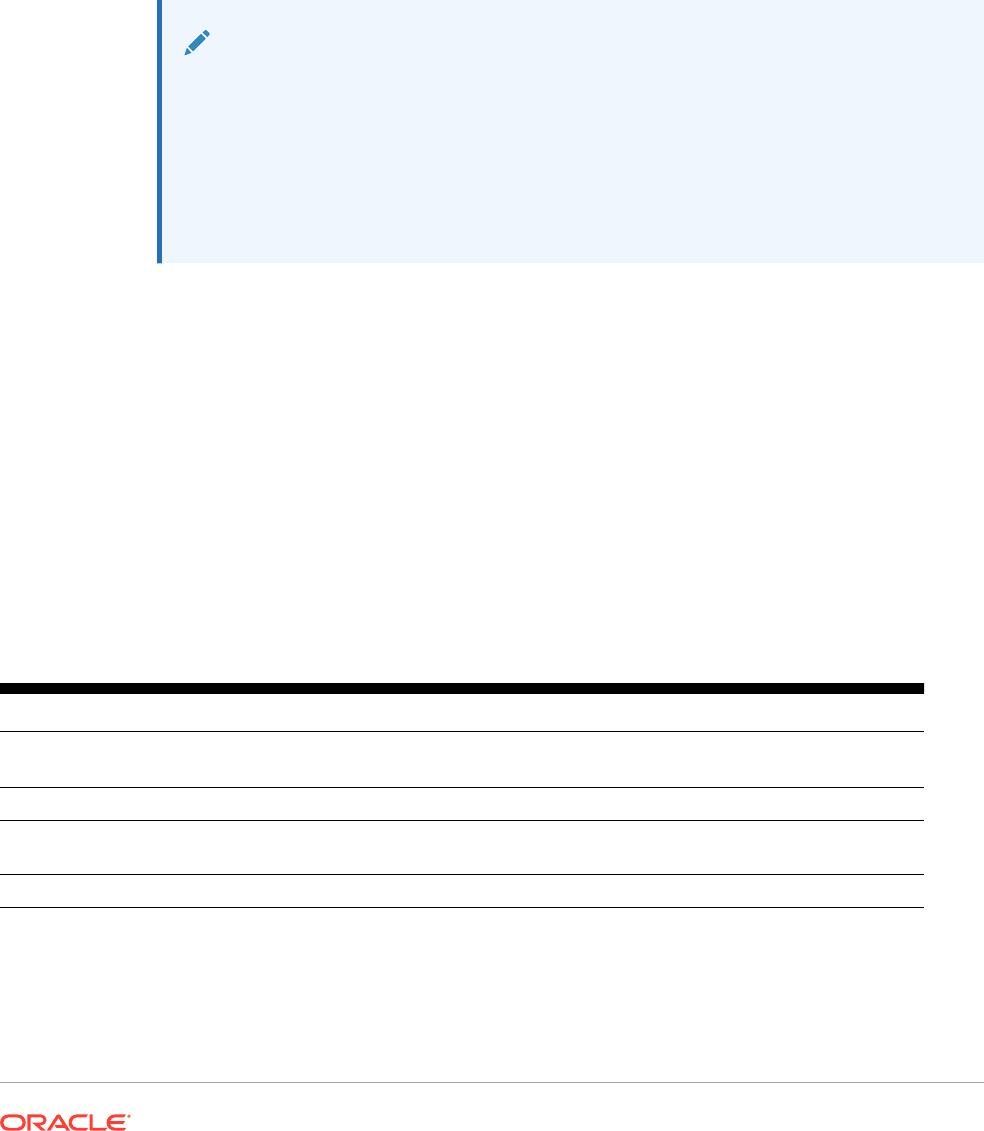
3
Developing RESTful Web Service Clients
You can develop Java EE web service clients that conform to the Representational State
Transfer (REST) architectural style using the Jersey 2.x Java API for RESTful Web Services
(JAX-RS) 2.0 reference implementation (RI).
Note:
Support for the Jersey 1.18 (JAX-RS 1.1RI) client APIs are deprecated in this
release of WebLogic Server but are maintained for backward compatibility. See
Develop RESTful Web Service Clients Using Jersey 1.18 (JAX-RS 1.1 RI)
Oracle recommends that you update your RESTful client applications to use the
Jersey 2.x (JAX-RS 2.0 RI) client APIs as described in this chapter at your earliest
convenience.
This chapter includes the following sections:
• Summary of Tasks to Develop RESTful Web Service Clients
• Example of a RESTful Web Service Client
• Invoking a RESTful Web Service from a Standalone Client
Summary of Tasks to Develop RESTful Web Service Clients
Some of the tasks required to develop a RESTful web service client include creating the
client class, targeting a web resource, identifying resources on the target, and more. The
following table summarizes a subset of the tasks that are required to develop RESTful web
service clients using Jersey 2.x (JAX-RS 2.0 RI).
Table 3-1 Summary of Tasks to Develop RESTful Web Service Clients
Task More Information
Create and configure an instance of the
javax.ws.rs.client.Client
class.
Creating and configuring a Client instance in Jersey 2.22
User Guide
Target the Web resource. Targeting a web resource in Jersey 2.22 User Guide
Identify resources on WebTarget. Identifying resource on WebTarget in Jersey 2.22 User
Guide
Invoke an HTTP request. Invoking a HTTP request in Jersey 2.22 User Guide
For information about developing RESTful web service clients using Oracle JDeveloper, see
Creating RESTful Web Services and Clients in Developing Applications with Oracle
JDeveloper.
3-1

Example of a RESTful Web Service Client
You can learn more about how to create a RESTful web service client by viewing an
example.The following is a simple example that shows how a client can be used to call
the RESTful web service defined in Example 2-1. In this example:
• The
Client
instance is created and a
WebTarget
defined.
• The resource path is defined to access the Web resource.
• The
Invocation.Builder
is used to send a
get
request to the resource.
• The response is returned as a String value.
Example 3-1 Simple RESTful Web Service Client Using Jersey 2.x (JAX-RS 2.0
RI)
package samples.helloworld.client;
...
import javax.ws.rs.client.Client;
import javax.ws.rs.client.ClientBuilder;
import javax.ws.rs.client.Invocation;
import javax.ws.rs.client.WebTarget;
import javax.ws.rs.core.MediaType;
import javax.ws.rs.core.Response;
public class helloWorldClient{
public static void main(String[] args) {
Client client = ClientBuilder.newClient();
WebTarget target = client.target("http://localhost:7101/restservice");
WebTarget resourceWebTarget;
resourceWebTarget = target.path("resources/helloworld");
Invocation.Builder invocationBuilder;
invocationBuilder = resourceWebTarget.request(
MediaType.TEXT_PLAIN_TYPE);
Response response = invocationBuilder.get();
System.out.println(response.getStatus());
System.out.println(response.readEntity(String.class));
...
}
...
}
For complete details, see Client API in Jersey 2.22 User Guide.
Invoking a RESTful Web Service from a Standalone Client
When invoking a RESTful web service from an environment that does not have Oracle
Fusion Middleware or WebLogic Server installed locally, and without the entire set of
Oracle Fusion Middleware or WebLogic Server classes in the CLASSPATH, you can
use the standalone client JAR file when invoking the web service.
The standalone RESTful web service client JAR supports basic JAX-RS client-side
functionality and OWSM security policies.
To use the standalone RESTful web service client JAR file with your client application,
perform the following steps:
Chapter 3
Example of a RESTful Web Service Client
3-2
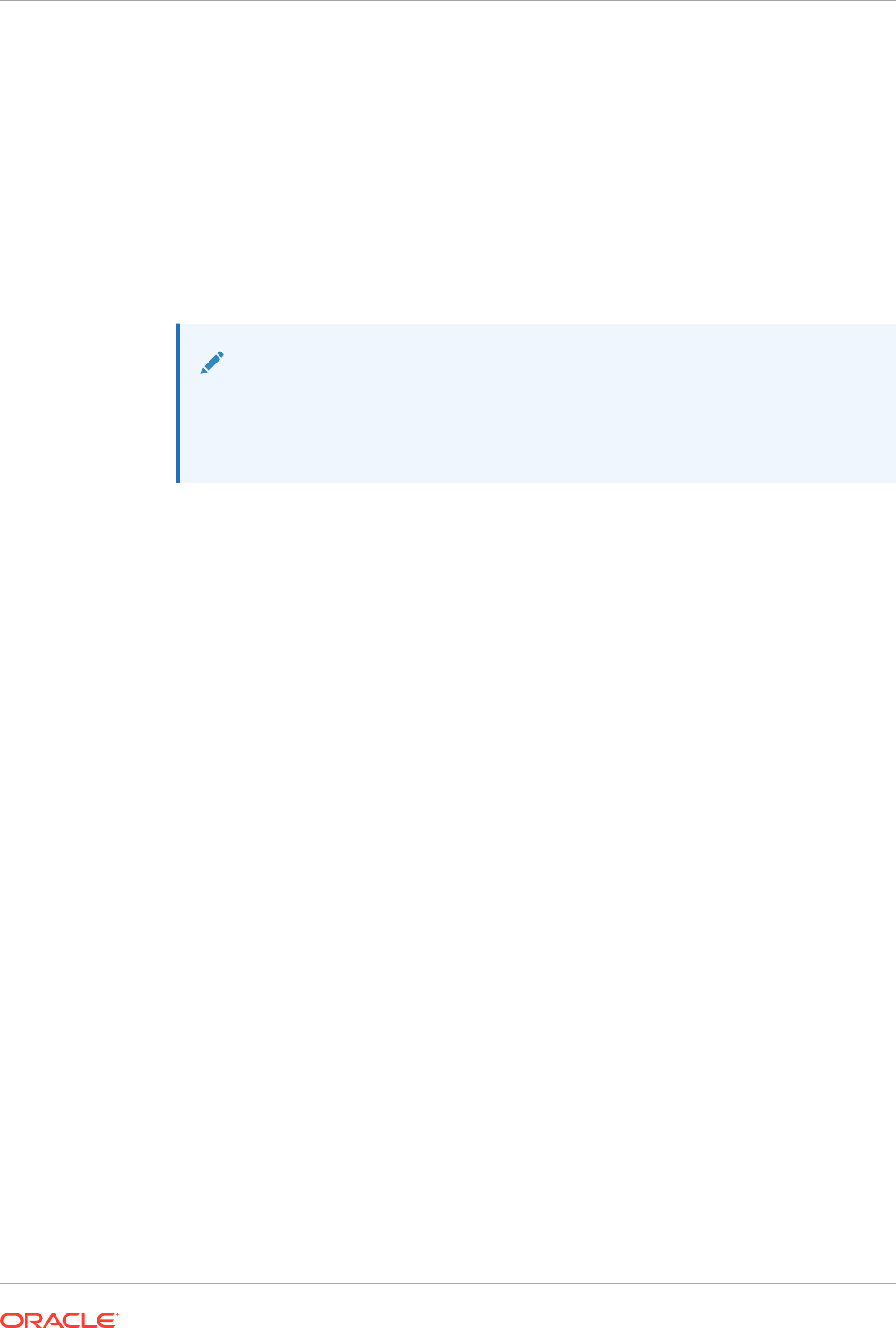
1. Create a Java SE client using your favorite IDE, such as Oracle JDeveloper. See
Developing and Securing Web Services in Developing Applications with Oracle
JDeveloper.
2. Copy the file
ORACLE_HOME/oracle_common/modules/clients/
com.oracle.jersey.fmw.client.jar
from the computer hosting Oracle Fusion
Middleware to the client computer, where
ORACLE_HOME
is the directory you specified as
Oracle Home when you installed Oracle Fusion Middleware.
For example, you might copy the file into the directory that contains other classes used
by your client application.
3. Add the JAR file to your CLASSPATH.
Note:
Ensure that your CLASSPATH includes the JAR file that contains the Ant
classes (
ant.jar
) as a subset are used by the standalone client JAR files. This
JAR file is typically located in the
lib
directory of the Ant distribution.
4. Configure your environment for Oracle Web Services Manager (OWSM) policies. This
step is optional, required only if you are attaching OWSM security policies to the RESTful
web services client.
The configuration steps required vary based on the type of policy being attached.
Examples are provided below. For additional configuration requirements, see Configuring
Java SE Applications to Use OPSS in Securing Applications with Oracle Platform
Security Services.
Example: Basic Authentication
For example, to support basic authentication using the
oracle/
wss_http_token_client_policy
security policy, perform the following steps:
a. Copy the
jps-config-jse.xml
and
audit-store.xml
files from the
domain_home/
config/fmwconfig
directory, where
domain_home
is the name and location of the
domain, to a location that is accessible to the RESTful client.
b. Create a wallet (
cwallet.sso
) in the same location that you copied the files in step 2
that defines a map called
oracle.wsm.security
and the credential key name that the
client application will use (for example,
weblogic-csf-key
).
The location of the file
cwallet.sso
is specified in the configuration file
jps-config-
jse.xml
with the element
<serviceInstance>
. See Using File Credential Stores in
Securing Applications with Oracle Platform Security Services.
c. On the Java command line, pass the following property defining the JPS
configuration file copied in step 1:
-Doracle.security.jps.config=<pathToConfigFile>
See About Java SE Application Security in Securing Applications with Oracle
Platform Security Services.
Example: SSL
For example, to support SSL policies, perform the following steps:
Chapter 3
Invoking a RESTful Web Service from a Standalone Client
3-3

a. Copy the
jps-config-jse.xml
and
audit-store.xml
files from the
domain_home/config/fmwconfig
directory, where
domain_home
is the name
and location of the domain, to a location that is accessible to the RESTful
client.
b. On the Java command line, pass the following properties defining the JPS
configuration file copied in step 1:
Define the JPS configuration file copied in step 1:
-Doracle.security.jps.config=<pathToConfigFile>
See About Java SE Application Security in Securing Applications with Oracle
Platform Security Services.
Define the trust store containing the trusted certificates:
-Djavax.net.ssl.trustStore=<trustStore>
See Setting Up One-Way SSL to the LDAP Security Store in Administering
Oracle Fusion Middleware.
Define the trust store password:
-Djavax.net.ssl.trustStorePassword=<password>
Chapter 3
Invoking a RESTful Web Service from a Standalone Client
3-4

4
Building, Packaging, and Deploying RESTful
Web Service Applications
Oracle WebLogic Server provides the components and utilities you need to package and
deploy Java EE web services that conform to the Representational State Transfer (REST)
architectural style using the Jersey 2.x Java API for RESTful Web Services (JAX-RS) 2.0
reference implementation (RI).
• Building RESTful Web Service Applications
• Packaging RESTful Web Service Applications
• Deploying RESTful Web Service Applications
Building RESTful Web Service Applications
You can build your RESTful web service and client applications using the compilation tools,
such as Apache Ant, Maven, or your favorite IDE, such as Oracle JDeveloper.See Overview
of WebLogic Server Application Development in Developing Applications for Oracle
WebLogic Server. For more information about JDeveloper, see Building Java Projects in
Developing Applications with Oracle JDeveloper.
Packaging RESTful Web Service Applications
All RESTful web service applications must be packaged as part of a web application. If your
web service is implemented as an EJB, it must be packaged and deployed within a WAR.
Table 4-1 summarizes the specific packaging options available for RESTful web service
applications.
Table 4-1 Packaging Options for RESTful Web Service Applications
Packaging Option Description
Application subclass Define a class that extends
javax.ws.rs.core.Application
to define the
components of a RESTful web service application deployment and provide additional
metadata. You can add a
javax.ws.rs.ApplicationPath
annotation to the
subclass to configure the servlet context path.
See Packaging With an Application Subclass.
Servlet Update the
web.xml
deployment descriptor to configure the servlet and mappings.
The method used depends on whether your Web application is using Servlet 3.0 or
earlier. See Packaging With a Servlet.
Default resource If you do not configure the servlet context path in your configuration using either of the
options specified above, the WebLogic Server provides a default RESTful web service
application servlet context path,
resources
. See Packaging as a Default Resource.
4-1

Packaging With an Application Subclass
In this packaging scenario, you create a class that extends
javax.ws.rs.core.Application
to define the components of a RESTful web service
application deployment and provides additional metadata. See
javax.ws.rs.core.Application
in the Java EE 7 Specification APIs.
Within the
Application
subclass, override the
getClasses()
and
getSingletons()
methods, as required, to return the list of RESTful web service resources. A resource
is bound to the
Application
subclass that returns it.
Note that an error is returned if both methods return the same resource.
Use the
javax.ws.rs.ApplicationPath
annotation to define the base URI pattern that
gets mapped to the servlet. For more information about how this information is used in
the base URI of the resource, see What Happens at Runtime: How the Base URI is
Constructed. See the
@ApplicationPath
annotation in the Java EE 7 Specification
APIs.
For simple deployments, no
web.xml
deployment descriptor is required. For more
complex deployments, for example to secure the web service or specify initialization
parameters, you can package a
web.xml
deployment descriptor with your application,
as described in Packaging With a Servlet.
Example 4-1 provides an example of a class that extends
javax.ws.rs.core.Application
and uses the
@ApplicationPath
annotation to define
the base URI of the resource.
Example 4-1 Example of a Class that Extends javax.ws.rs.core.Application
import javax.ws.rs.core.Application;
javax.ws.rs.ApplicationPath;
...
@ApplicationPath("resources")
public class MyApplication extends Application {
public Set<Class<?>> getClasses() {
Set<Class<?>> s = new HashSet<Class<?>>();
s.add(HelloWorldResource.class);
return s;
}
}
Alternatively, use the following API to scan for root resource and provider classes for a
specified classpath or a set of package names:
•
org.glassfish.jersey.server.ResourceConfig
, as described in JAX-RS
Application Model in Jersey 2.22 User Guide.
Packaging With a Servlet
The following sections describe how to package the RESTful web service application
with a servlet using the
web.xml
deployment descriptor, based on whether your Web
application is using Servlet 3.0 or earlier.
• How to Package the RESTful Web Service Application with Servlet 3.0
• How to Package the RESTful Web Service Application with Pre-3.0 Servlets
Chapter 4
Packaging RESTful Web Service Applications
4-2
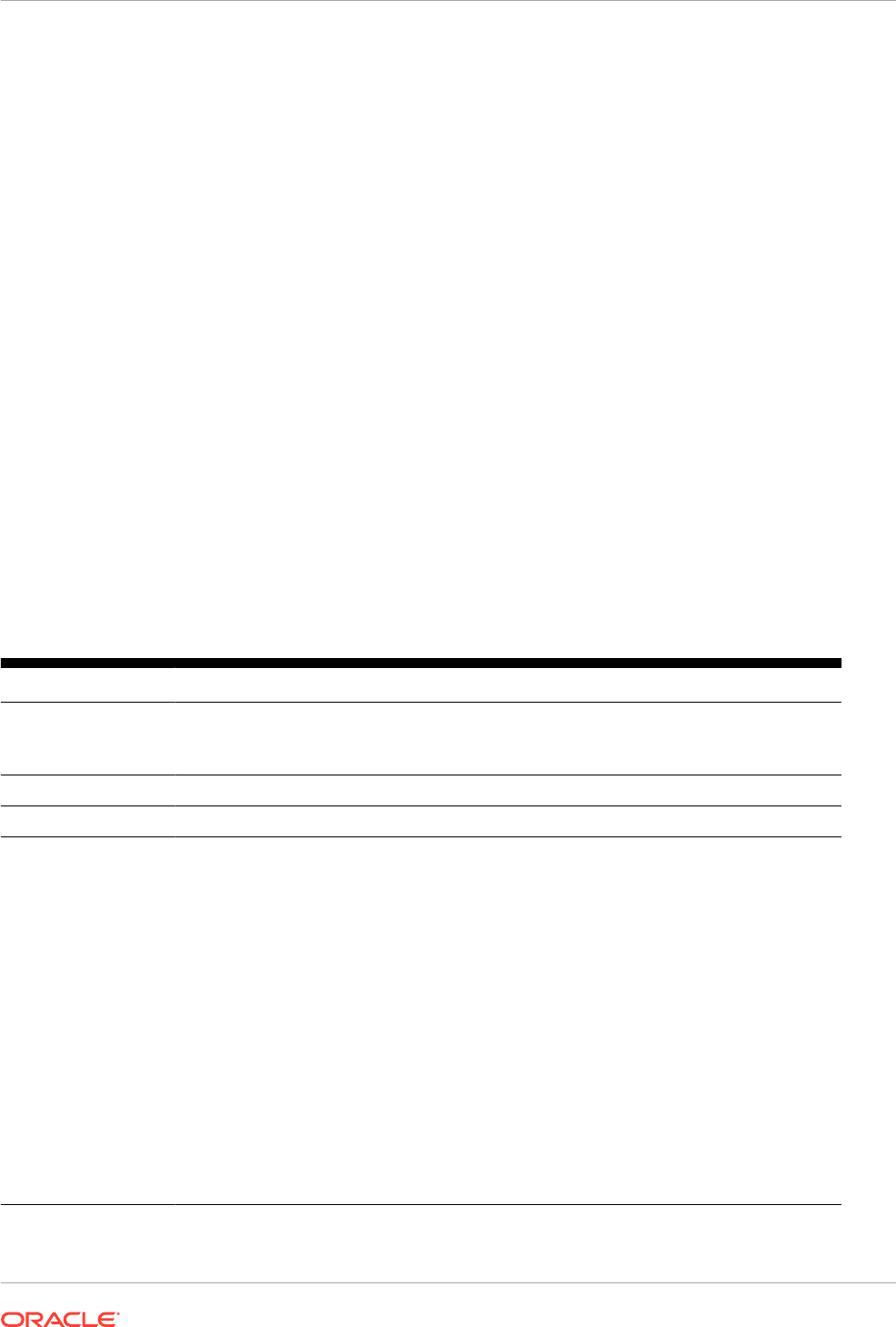
The
web.xml
file is located in the
WEB-INF
directory in the root directory of your application
archive. For more information about the
web.xml
deployment descriptor, see web.xml
Deployment Descriptor Elements in Developing Web Applications, Servlets, and JSPs for
Oracle WebLogic Server.
How to Package the RESTful Web Service Application with Servlet 3.0
To package the RESTful Web Service application with Servlet 3.0, update the
web.xml
deployment descriptor to define the elements defined in the following sections. The elements
vary depending on whether you include in the package a class that extends
javax.ws.rs.core.Application
.
• Packaging the RESTful Web Service Application Using web.xml With Application
Subclass
• Packaging the RESTful Web Service Application Using web.xml Without Application
Subclass
For more information about any of the elements, see servlet in Developing Web Applications,
Servlets, and JSPs for Oracle WebLogic Server.
Packaging the RESTful Web Service Application Using web.xml With Application Subclass
If a class that extends
javax.ws.rs.core.Application
is packaged with
web.xml
, then
define the elements as described in Table 4-2. For an example, see Example 4-2.
Table 4-2 Packaging the RESTful Web Service Application Using web.xml With Application
Subclass
Element Description
<servlet-name>
Set this element to the fully qualified name of the class that extends
javax.ws.rs.core.Application
. You can specify multiple servlet entries to define
multiple
Application
subclass names.
<servlet-class>
Not required.
<init-param>
Not required.
<servlet-mapping>
Set as the base URI pattern that gets mapped to the servlet.
If not specified, one of the following values are used, in order of precedence:
•
@ApplicationPath
annotation value defined in the
javax.ws.rs.core.Application
subclass. For example:
package test;
@ApplicationPath("res")
public class MyJaxRsApplication extends java.ws.rs.core.Application
...
See Packaging With an Application Subclass.
• The value
resources
. This is the default base URI pattern for RESTful web service
applications. See Packaging as a Default Resource.
If both the
<servlet-mapping>
and
@ApplicationPath
are specified, the
<servlet-
mapping>
takes precedence.
For more information about how this information is used in the base URI of the resource,
see What Happens at Runtime: How the Base URI is Constructed.
Chapter 4
Packaging RESTful Web Service Applications
4-3

The following example demonstrates how to update the
web.xml
file if a class that
extends
javax.ws.rs.core.Application
is packaged with
web.xml
.
Example 4-2 Updating web.xml for Servlet 3.0 If Application Subclass is in Package
<web-app>
<servlet>
<servlet-name>org.foo.rest.MyApplication</servlet-name>
</servlet>
...
<servlet-mapping>
<servlet-name>org.foo.rest.MyApplication</servlet-name>
<url-pattern>/resources</url-pattern>
</servlet-mapping>
...
</web-app>
Packaging the RESTful Web Service Application Using web.xml Without Application
Subclass
If a class that extends
javax.ws.rs.core.Application
is not packaged with
web.xml
,
then define the elements as described in Table 4-3.
Note:
In this scenario, you cannot support multiple RESTful web service
applications.
Table 4-3 Packaging the RESTful Web Service Application Using web.xml Without Application
Subclass
Element Description
<servlet-name>
Set this element to the desired servlet name.
<servlet-class>
Set this element to
org.glassfish.jersey.servlet.ServletContainer
to delegate
all Web requests to the Jersey servlet.
<init-param>
Not required.
<servlet-mapping>
Set as the base URI pattern that gets mapped to the servlet. If not specified, this value
defaults to
resources
. See Packaging as a Default Resource.
For more information about how this information is used in the base URI of the resource,
see What Happens at Runtime: How the Base URI is Constructed.
The following example demonstrates how to update the
web.xml
file if a class that
extends
javax.ws.rs.core.Application
is not packaged with
web.xml
.
Chapter 4
Packaging RESTful Web Service Applications
4-4
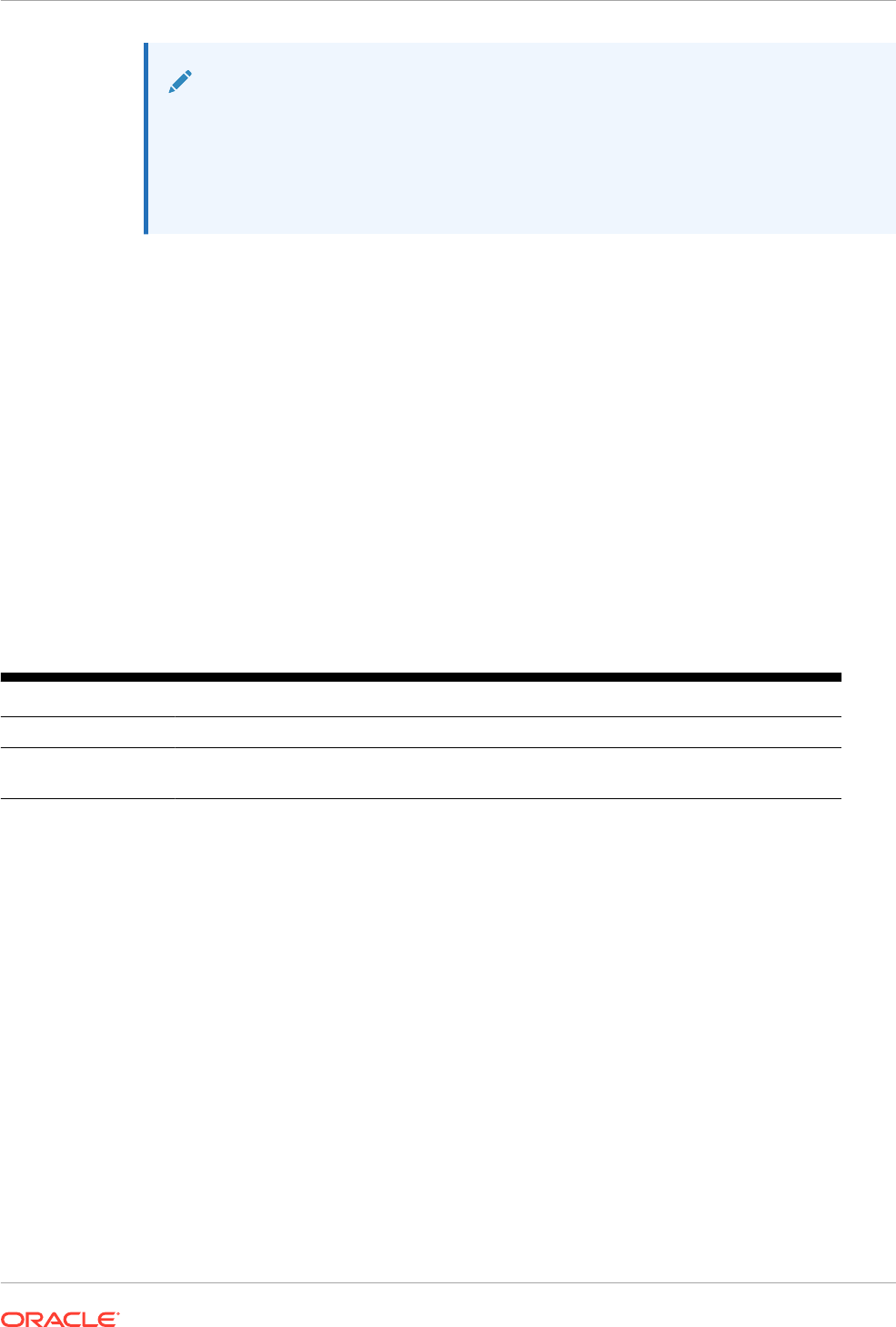
Note:
The JAX-RS Specification requires the RESTful Web Service application using the
web.xml
without the Application subclass for Servlet 3.0 to set the servlet-name to
javax.ws.rs.Application
as described in the Jersey 2.22 User Guide. The
packaging method defined in this section is not supported by the JAX-RS
specification.
Example 4-3 Updating web.xml for Servlet 3.0 If Application Subclass is Not in Package
<web-app>
<servlet>
<servlet-name>Jersey Web Application</servlet-name>
<servlet-class>org.glassfish.jersey.servlet.ServletContainer</servlet-class>
</servlet>
<servlet-mapping>
<servlet-name>Jersey Web Application</servlet-name>
<url-pattern>/*</url-pattern>
</servlet-mapping>
</web-app>
How to Package the RESTful Web Service Application with Pre-3.0 Servlets
Table 4-4 describes the elements to update in the
web.xml
deployment descriptor to package
the RESTful web service application with a pre-3.0 servlet.
Table 4-4 Packaging the RESTful Web Service Application with Pre-3.0 Servlets
Element Description
<servlet-name>
Set this element to the desired servlet name.
<servlet-class>
Set this element to
org.glassfish.jersey.servlet.ServletContainer
to delegate
all Web requests to the Jersey servlet.
Chapter 4
Packaging RESTful Web Service Applications
4-5
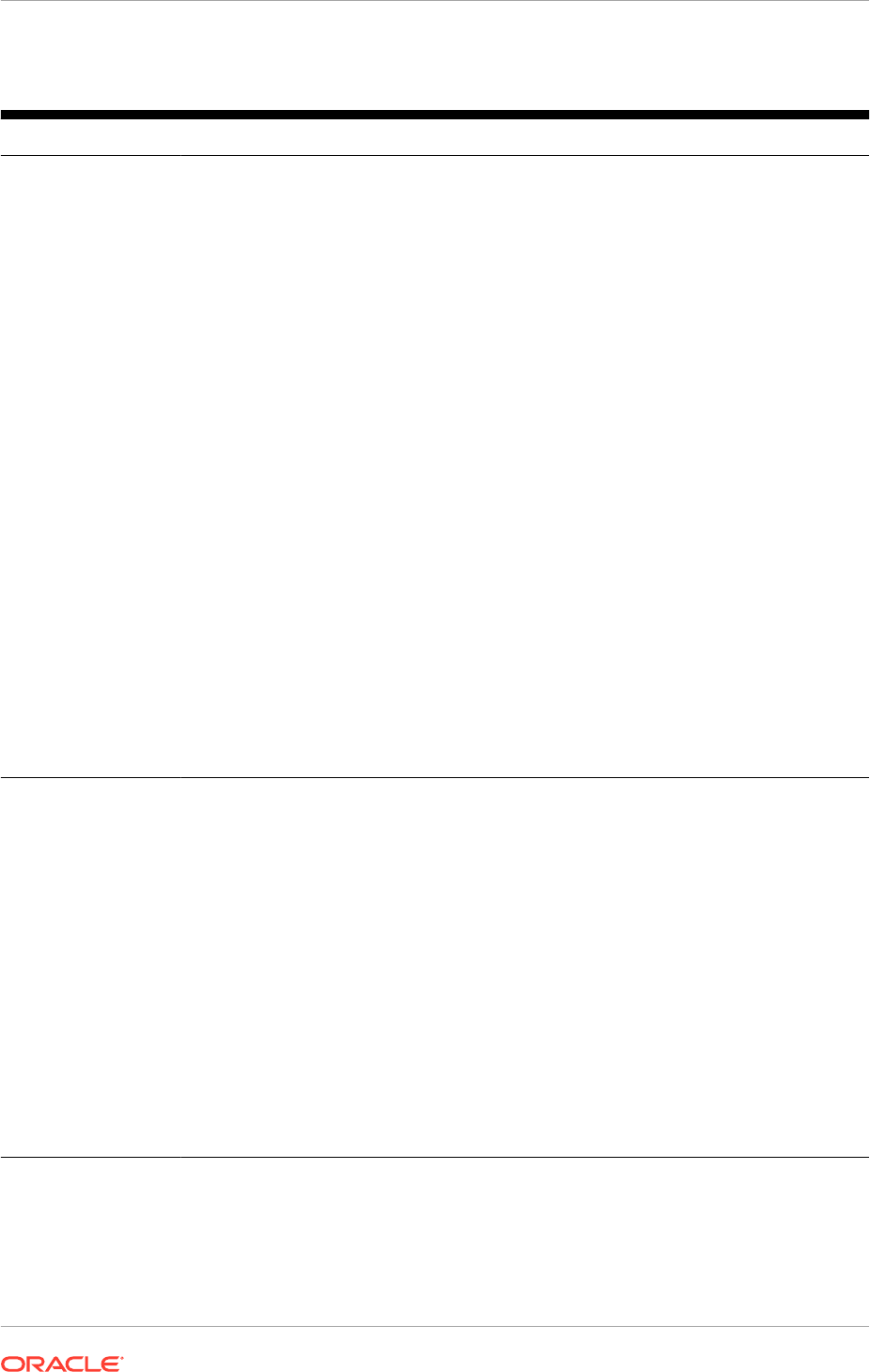
Table 4-4 (Cont.) Packaging the RESTful Web Service Application with Pre-3.0 Servlets
Element Description
<init-param>
Set this element to define the class that extends the
javax.ws.rs.core.Application
:
<init-param>
<param-name>
javax.ws.rs.Application
</param-name>
<param-value>
ApplicationSubclassName
</param-value>
</init-param>
Alternatively, you can specify the packages to be scanned for resources and providers, as
follows:
<init-param>
<param-name>
jersey.config.server.provider.packages
</param-name>
<param-value>
project1
</param-value>
</init-param>
<init-param>
<param-name>
jersey.config.server.provider.scanning.recursive
</param-name>
<param-value>
false
</param-value>
</init-param>
<servlet-mapping>
Set as the base URI pattern that gets mapped to the servlet.
If not specified, one of the following values are used, in order of precedence:
•
@ApplicationPath
annotation value defined in the
javax.ws.rs.core.Application
subclass. For example:
package test;
@ApplicationPath("res")
public class MyJaxRsApplication extends java.ws.rs.core.Application
...
See Packaging With an Application Subclass.
• The value
resources
. This is the default base URI pattern for RESTful web service
applications. See Packaging as a Default Resource.
If both the
<servlet-mapping>
and
@ApplicationPath
are specified, the
<servlet-
mapping>
takes precedence.
For more information about how this information is used in the base URI of the resource,
see What Happens at Runtime: How the Base URI is Constructed.
The following example demonstrates how to update the
web.xml
file if a class that
extends
javax.ws.rs.core.Application
is not packaged with
web.xml
.
Chapter 4
Packaging RESTful Web Service Applications
4-6
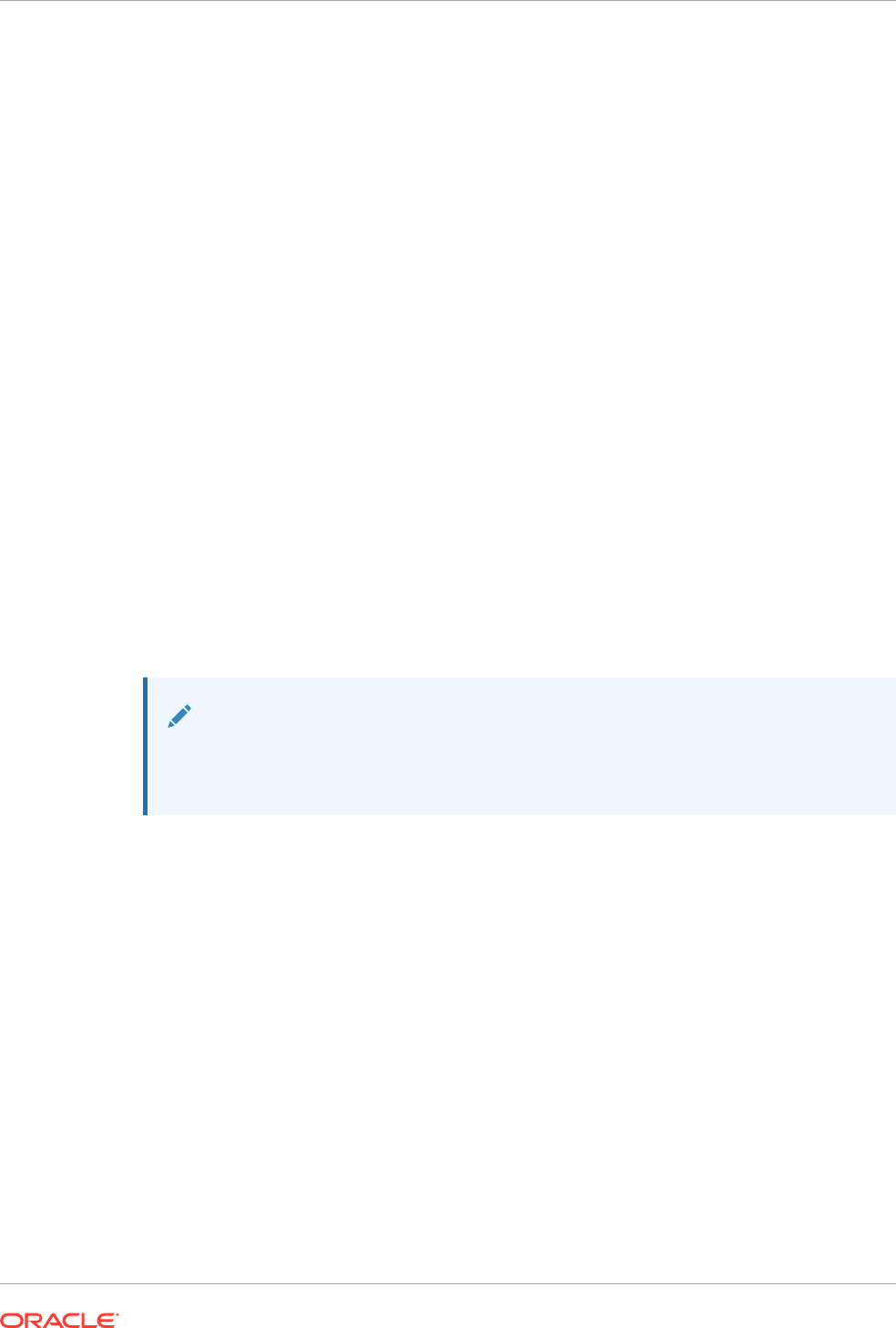
Example 4-4 Updating web.xml for Pre-3.0 Servlets
<web-app>
<servlet>
<servlet-name>Jersey Web Application</servlet-name>
<servlet-class>org.glassfish.jersey.servlet.ServletContainer</servlet-class>
<init-param>
<param-name>jersey.config.server.provider.packages</param-name>
<param-value>org.foo.myresources,org.bar.otherresources</param-value>
</init-param>
<init-param>
<param-name>jersey.config.server.provider.scanning.recursive</param-name>
<param-value>false</param-value>
</init-param>
...
</servlet>
...
</web-app>
Packaging as a Default Resource
By default, WebLogic Server defines a default RESTful web service application context path,
resources
. The default RESTful web service application context path is used if the following
are true:
• You did not update the
web.xml
deployment descriptor to include a Servlet mapping, as
described in Packaging With a Servlet.
• The
@ApplicationPath
annotation is not defined in the
javax.ws.rs.core.Application
subclass, as described in Packaging With an Application Subclass.
Note:
If a servlet is already registered at the default context path, then a warning is
issued.
For example, if the relative URI of the root resource class for the RESTful web service
application is defined as
@Path('/helloworld')
and the default RESTful web service
application context path is used, then the RESTful web service application resource will be
available at:
http://<host>:<port>/<contextPath>/resources/helloworld
Deploying RESTful Web Service Applications
Application deployment refers to the process of making an application or module available for
processing client requests in a WebLogic domain. For information about deploying a web
application, see Understanding WebLogic Server Deployment in Deploying Applications to
Oracle WebLogic Server.
Chapter 4
Deploying RESTful Web Service Applications
4-7

5
Securing RESTful Web Services and Clients
Oracle WebLogic Server fully supports the means to secure Java EE web services that
conform to the Representational State Transfer (REST) architectural style using Java API for
RESTful Web Services (JAX-RS) reference implementation (RI).
• About RESTful Web Service Security
• Securing RESTful Web Services and Clients Using OWSM Policies
• Securing RESTful Web Services Using web.xml
• Securing RESTful Web Services Using SecurityContext
• Securing RESTful Web Services Using Java Security Annotations
About RESTful Web Service Security
You can secure your RESTful web services so that they can support authentication,
authorization, or encryption. You can use one of the following methods:
• Attaching Oracle Web Services Manager (OWSM) policies. See Securing RESTful Web
Services and Clients Using OWSM Policies.
• Updating the
web.xml
deployment descriptor to access information about the
authenticated users. See Securing RESTful Web Services Using web.xml.
• Using the
javax.ws.rs.core.SecurityContext
interface to access security-related
information for a request. See Securing RESTful Web Services Using SecurityContext.
• Applying annotations to your JAX-RS classes. See Securing RESTful Web Services
Using Java Security Annotations.
For information about developing RESTful web service clients using Oracle JDeveloper, see
How to Attach Policies to RESTful Web Services and Clients in Developing Applications with
Oracle JDeveloper.
Securing RESTful Web Services and Clients Using OWSM
Policies
Only a subset of OWSM security policies are supported for RESTful web services.For
information, see Which OWSM Policies Are Supported for RESTful Web Services in Securing
Web Services and Managing Policies with Oracle Web Services Manager.
You can attach OWSM security policies to RESTful web services using one of the following
methods:
• Programmatically, at design time, as described in Attaching Policies to RESTful Web
Services and Clients at Design Time in Securing Web Services and Managing Policies
with Oracle Web Services Manager.
• Post-deployment, both directly and globally, using:
5-1

– Fusion Middleware Control, as described in About Attaching Policies to Web
Services and Clients Using Fusion Middleware Control in Securing Web
Services and Managing Policies with Oracle Web Services Manager.
– WLST, as described in About Attaching Policies to Web Services and Clients
Using WLST in Securing Web Services and Managing Policies with Oracle
Web Services Manager.
Example 5-1 provides an example of using WLST to attach the
oracle/
http_basic_auth_over_ssl_service_policy
policy to a RESTful service. See
Attaching Policies Directly Using WLST in Securing Web Services and Managing
Policies with Oracle Web Services Manager.
Example 5-1 Securing RESTful Web Services Using OWSM Policies With WLST
C:\Oracle\Middleware\oracle_common\common\bin> wlst.cmd
...
wls:/offline> connect("weblogic","password","t3://myAdminServer.example.com:7001")
Connecting to t3://myAdminServer.example.com:7001" with userid weblogic ...
Successfully connected to Admin Server "AdminServer" that belongs to domain "my_domain".
Warning: An insecure protocol was used to connect to the
server. To ensure on-the-wire security, the SSL port or
Admin port should be used instead.
wls:/my_domain/serverConfig> beginWSMSession()
Location changed to domainRuntime tree. This is a read-only tree with DomainMBean as the root.
For more help, use help('domainRuntime')
Session started for modification.
wls:/my_domain/serverConfig> selectWSMPolicySubject('weblogic/my_domain/jaxrs_pack',
'#jaxrs_pack.war', 'REST-Resource(Jersey)')
The policy subject is selected for modification.
wls:/my_domain/serverConfig> attachWSMPolicy('oracle/http_basic_auth_over_ssl_service_policy')
Policy reference "oracle/http_basic_auth_over_ssl_service_policy" added.
wls:/my_domain/serverConfig> commitWSMSession()
The policy set for subject "/weblogic/my_domain/jaxrs_pack|#jaxrs_pack.war|REST-
Resource(Jersey)" was saved successfully.
Securing RESTful Web Services Using web.xml
You secure RESTful web services using the
web.xml
deployment descriptor as you
would for other Java EE Web applications. For complete details, see:
• Developing Secure Web Applications in Developing Applications with the
WebLogic Security Service.
• Securing Web Applications in The Java EE 7 Tutorial.
For example, to secure your RESTful web service using basic authentication, perform
the following steps:
1. Define a
<security-constraint>
for each set of RESTful resources (URIs) that
you plan to protect.
Chapter 5
Securing RESTful Web Services Using web.xml
5-2

2. Use the
<login-config>
element to define the type of authentication you want to use and
the security realm to which the security constraints will be applied.
3. Define one or more security roles using the
<security-role>
tag and map them to the
security constraints defined in step 1. See security-role in Developing Applications with
the WebLogic Security Service.
4. To enable encryption, add the
<user-data-constraint>
element and set the
<transport-guarantee>
subelement to
CONFIDENTIAL
. See user-data-constraint in
Developing Applications with the WebLogic Security Service.
Example 5-2 Securing RESTful Web Services Using Basic Authentication
The following example demonstrates how to secure a Jersey 2.x (JAX-RS 2.0) RESTful web
service using basic authentication.
<web-app>
<servlet>
<servlet-name>RestServlet</servlet-name>
<servlet-class>org.glassfish.jersey.servlet.ServletContainer</servlet-class>
</servlet>
<servlet-mapping>
<servlet-name>RestServlet</servlet-name>
<url-pattern>/*</url-pattern>
</servlet-mapping>
<security-constraint>
<web-resource-collection>
<web-resource-name>Orders</web-resource-name>
<url-pattern>/orders</url-pattern>
<http-method>GET</http-method>
<http-method>POST</http-method>
</web-resource-collection>
<auth-constraint>
<role-name>admin</role-name>
</auth-constraint>
</security-constraint>
<login-config>
<auth-method>BASIC</auth-method>
<realm-name>default</realm-name>
</login-config>
<security-role>
<role-name>admin</role-name>
</security-role>
</web-app>
Securing RESTful Web Services Using SecurityContext
The
javax.ws.rs.core.SecurityContext
interface provides access to security-related
information for a request. The
SecurityContext
provides functionality similar to
javax.servlet.http.HttpServletRequest
, enabling you to access the following security-
related information:
•
java.security.Principal
object containing the name of the user making the request.
• Authentication type used to secure the resource, such as
BASIC_AUTH, FORM_AUTH
, and
CLIENT_CERT_AUTH
.
• Whether the authenticated user is included in a particular role.
Chapter 5
Securing RESTful Web Services Using SecurityContext
5-3

• Whether the request was made using a secure channel, such as HTTPS.
You access the
SecurityContext
by injecting an instance into a class field, setter
method, or method parameter using the
javax.ws.rs.core.Context
annotation.
For more information, see the following topics in the Java EE 7 Specification APIs:
•
SecurityContext
interface
•
@Context
annotation
Example 5-3 shows how to inject an instance of
SecurityContext
into the
sc
method
parameter using the
@Context
annotation, and check whether the authorized user is
included in the
admin
role before returning the response.
Example 5-3 Securing RESTful Web Service Using SecurityContext
package samples.helloworld;
import javax.ws.rs.GET;
import javax.ws.rs.Path;
import javax.ws.rs.Produces;
import javax.ws.rs.core.SecurityContext;
import javax.ws.rs.core.Context;
...
@Path("/stateless")
@Stateless(name = "JaxRSStatelessEJB")
public class StlsEJBApp {
...
@GET
@Produces("text/plain;charset=UTF-8")
@Path("/hello")
public String sayHello(@Context SecurityContext sc) {
if (sc.isUserInRole("admin")) return "Hello World!";
throw new SecurityException("User is unauthorized.");
}
Securing RESTful Web Services Using Java Security
Annotations
The
javax.annotation.security
package provides annotations that you can use to
secure your RESTful web services.These annotations are defined in Table 5-1.
Table 5-1 Annotations for Securing RESTful Web Services
Annotation Description
@DenyAll
Specifies that no security roles are allowed to invoke the specified methods.
@PermitAll
Specifies that all security roles are allowed to invoke the specified methods.
@RolesAllowed
Specifies the list of security roles that are allowed to invoke the methods in the application.
Before you can use the annotations defined in Table 5-1, you must register the roles-
allowed feature, as described in Securing JAX-RS resources with standard
javax.annotation.security annotations in the Jersey 2.22 User Guide.
Chapter 5
Securing RESTful Web Services Using Java Security Annotations
5-4

Example 5-4 shows how to define the security roles that are allowed, by default, to access
the methods defined in the
helloWorld
class. The
sayHello
method is annotated with the
@RolesAllows
annotation to override the default and only allow users that belong to the
ADMIN
security role.
Example 5-4 Securing RESTful Web Service Using Java Security Annotations
package samples.helloworld;
import javax.ws.rs.GET;
import javax.ws.rs.Path;
import javax.ws.rs.Produces;
import javax.annotation.Security.RolesAllowed;
@Path("/helloworld")
@RolesAllowed({"ADMIN", "ORG1"})
public class helloWorld {
@GET
@Path("sayHello")
@Produces("text/plain")
@RolesAllows("ADMIN")
public String sayHello() {
return "Hello World!";
}
}
See also:
• Specifying Authorized Users by Declaring Security Roles in The Java EE 7 Tutorial
•
javax.annotation.security
Javadoc
Chapter 5
Securing RESTful Web Services Using Java Security Annotations
5-5
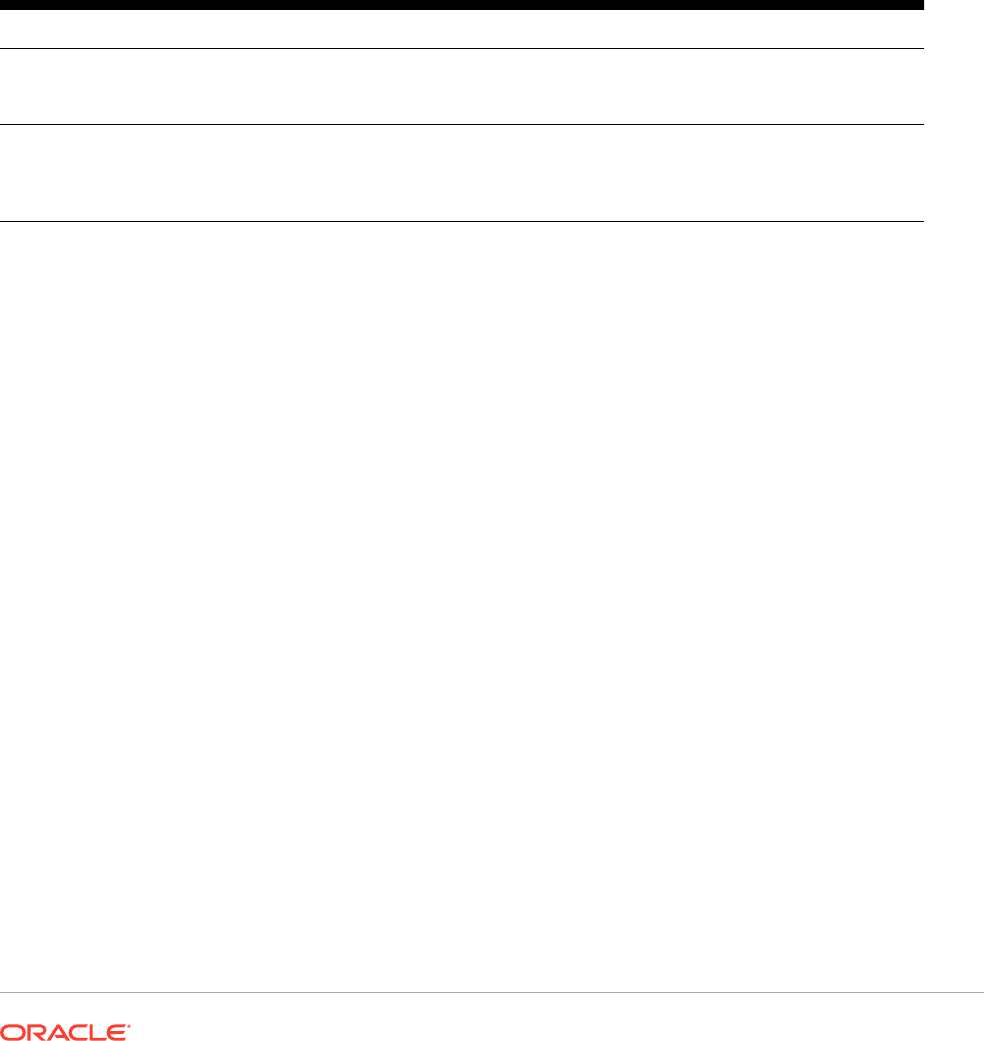
6
Testing RESTful Web Services
After you have deployed a Web application that contains a RESTful web service to Oracle
WebLogic Server, you can test your application. This chapter describes how to test Java EE
web services that conform to the Representational State Transfer (REST) architectural style
using Java API for RESTful Web Services (JAX-RS).
Table 6-1 lists the methods that can be employed to test your RESTful web service.
Table 6-1 Methods for Testing RESTful Web Services
Method Description
Enterprise Manager Fusion
Middleware Control
Use the test interface provided with Enterprise Manager Fusion Middleware Control to
test the RESTful web service resource methods. See Introduction to Testing a
RESTful Web Service in Administering Web Services.
WebLogic Server
Administration Console
Navigate to the Testing tab for your application deployment in the WebLogic Server
Administration Console to validate the application deployment and view the WADL file.
See Test RESTful Web Services in Oracle WebLogic Server Administration Console
Online Help.
6-1
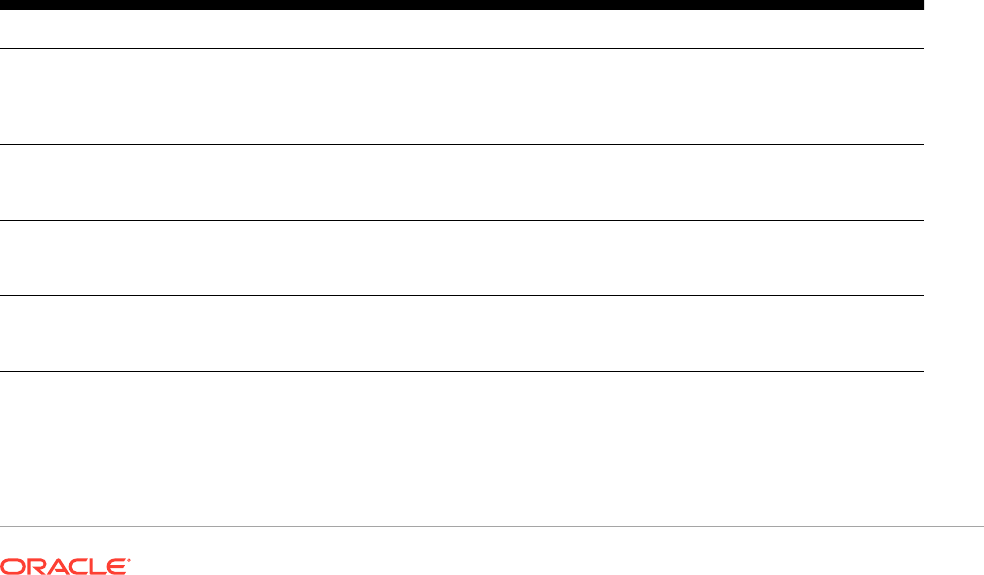
7
Monitoring RESTful Web Services and Clients
Oracle WebLogic Server supports a number of ways to monitor Java EE web services that
conform to the Representational State Transfer (REST) architectural style using Java API for
RESTful Web Services (JAX-RS).
• About Monitoring RESTful Web Services
• Monitoring RESTful Web Services Using Enterprise Manager Fusion Middleware Control
• Monitoring RESTful Web Services Using the Administration Console
• Monitoring RESTful Web Services Using WLST
• Enabling the Tracing Feature
• Disabling RESTful Web Service Application Monitoring
• Enable Monitoring of Synthetic Jersey Resources in a RESTful Web Service Application
About Monitoring RESTful Web Services
WebLogic Server provides several runtime MBeans that capture runtime information and let
you monitor runtime statistics for your RESTful web service applications.Application
monitoring is useful when you need to identify the performance hotspots in your JAX-RS
application, observe execution statistics of particular resources, or listen to application or
request lifecycle events.
You can use the methods defined in Table 7-1 to monitor your RESTful web service
applications.
Table 7-1 Methods for Monitoring RESTful Web Services
Method Description
Fusion Middleware Control Enterprise Manager Access runtime information and monitor runtime
statistics, as described in Monitoring RESTful Web
Services Using Enterprise Manager Fusion Middleware
Control.
WebLogic Server Administration Console Access runtime information and monitor runtime
statistics, as described in Monitoring RESTful Web
Services Using the Administration Console.
WebLogic Scripting Tool (WLST) Access runtime information and monitor runtime
statistics, as described in Monitoring RESTful Web
Services Using WLST.
Logging filter Monitor how a request is processed and dispatched to
Jersey JAX-RS RI components, as described in
Enabling the Tracing Feature.
In addition to the monitoring methods described in Table 7-1, Jersey 2.x (JAX-RS 2.0 RI)
provides additional monitoring features, including support for event listeners and statistics
monitoring. See Monitoring Jersey Applications in the Jersey 2.22 User Guide.
7-1

Note:
RESTful web service monitoring is enabled by default. In some cases, this
may result in increased memory consumption. You can disable the
monitoring feature at the domain level, and at the application level. See
Disabling RESTful Web Service Application Monitoring.
Monitoring RESTful Web Services Using Enterprise
Manager Fusion Middleware Control
Using Enterprise Manager Fusion Middleware Control, you can monitor runtime
statistics for your RESTful Applications and resources, such as error and invocation
counts, execution times, and so on. For complete information, see Monitoring Web
Services in Administering Web Services.
Monitoring RESTful Web Services Using the Administration
Console
Using the WebLogic Server Administration Console, you can monitor enhanced
runtime statistics for your RESTful applications and resources, including detailed
deployment and configuration data, global execution statistics, and resource and
resource method execution statistics.
To monitor your deployed RESTful web services using the WebLogic Server
Administration Console, follow these steps:
1. Invoke the WebLogic Server Administration Console in your browser using the
following URL:
http://[host]:[port]/console
where:
•
host
refers to the computer on which WebLogic Server is running.
•
port
refers to the port number on which WebLogic Server is listening (default
value is
7001
).
2. Follow the procedure described in Monitor RESTful Web services in Oracle
WebLogic Server Administration Console Online Help.
Monitoring RESTful Web Services Using WLST
You can use WLST to monitor the runtime MBeans that capture runtime information
and runtime statistics for your RESTful web service applications.These MBeans are
listed and described in Table 7-2.
Chapter 7
Monitoring RESTful Web Services Using Enterprise Manager Fusion Middleware Control
7-2

Table 7-2 Runtime MBeans for Monitoring RESTful Web Services
Runtime MBean Description
ExceptionMapperStatistic
s
Displays monitoring information about the RESTful web service
application exception mapper executions. See
JaxRsExceptionMapperStatisticsRuntimeMBean in MBean Reference
for Oracle WebLogic Server.
JaxRsApplication
Displays monitoring information for the RESTful web service
application. See JaxRsApplicationRuntimeBean in MBean Reference
for Oracle WebLogic Server.
RequestStatistics
Displays monitoring information about requests executed by the
RESTful web service application. The statistics apply to all requests
handled by the application and are not bound to any specific resource
or resource method. See JaxRsExecutionStatisticsRuntimeMBean in
MBean Reference for Oracle WebLogic Server.
ResourceConfig
Displays monitoring information about the RESTful web service
application resource configuration. See
JaxRsResourceConfigTypeRuntimeBean inMBean Reference for
Oracle WebLogic Server.
Note: The
JaxRsResourceConfigTypeRuntimeBean
is deprecated
in this release of WebLogic Server. You should use the
Properties
and
ApplicationClass
attributes of the
JaxRsApplicationRuntimeMBean
instead. See
JaxRsApplicationRuntimeBean inMBean Reference for Oracle
WebLogic Server.
ResponseStatistics
Displays monitoring information about responses created by the
RESTful web service application. The statistics apply to all responses
created by the application and are not bound to any specific resource
or resource method. See JaxRsResponseStatisticsRuntimeMBean in
MBean Reference for Oracle WebLogic Server.
RootResources
Displays monitoring information about the RESTful web service
resource. Any object that is managed by a container (such as EJB)
will have application scope. All other resources by default will have
request scope. See JaxRsResourceRuntimeMBeanin MBean
Reference for Oracle WebLogic Server.
Note: This MBean is deprecated in this release of WebLogic Server.
You should use RootResourcesByClass instead.
RootResourcesByClass
Displays monitoring information for each resource class that is
deployed in the RESTful web service application. One resource class
can serve requests matched to different URIs. The array contains
resource classes that are registered in the resource model plus
resource classes of sub resources returned from sub resource
locators. See JaxRsResourceRuntimeMBean inMBean Reference for
Oracle WebLogic Server.
RootResourcesbyURI
Displays monitoring information for each URI that is exposed in the
RESTful web service application. See JaxRsUriRuntimeMBean in
MBean Reference for Oracle WebLogic Server.
Servlet
Displays monitoring information for the servlet that hosts the RESTful
web service application. See ServletRuntimeMBean in MBean
Reference for Oracle WebLogic Server.
To monitor RESTful web services using WLST, perform the steps provided in the following
procedure.
Chapter 7
Monitoring RESTful Web Services Using WLST
7-3

In this procedure, the example steps provided demonstrate how to monitor the JAX-
RS 2.0 Asynchronous Processing sample delivered with the WebLogic Server
Samples Server, described at Sample Applications and Code Examples in
Understanding Oracle WebLogic Server.
1. Invoke WLST, as described in "Invoking WLST" in Understanding the WebLogic
Scripting Tool.
For example:
c:\Oracle\oracle_common\common\bin> wlst
2. Connect to the Administration Server instance, as described in connect in WLST
Command Reference for WebLogic Server.
For example:
wls:/offline> connect('weblogic','password','t3://localhost:8001')
3. Navigate to the server runtime MBean, as described in serverRuntime in WLST
Command Reference for WebLogic Server.
For example:
wls:/samples/serverConfig> serverRuntime()
Location changed to serverRuntime tree. This is a read-only tree
with ServerRuntimeMBean as the root.
For more help, use help('serverRuntime')
wls:/samples/serverRuntime>
4. Navigate to the Web application component runtime MBean.
For example, to navigate to runtime MBean for the application named
jaxrs-
async
:
wls:/samples/serverRuntime> cd('ApplicationRuntimes/jaxrs-async')
wls:/samples/serverRuntime/ApplicationRuntimes/jaxrs-async>
cd('ComponentRuntimes')
wls:/samples/serverRuntime/ApplicationRuntimes/jaxrs/ComponentRuntimes>
cd
('AdminServer_/jaxrs-async')
5. Navigate to the application runtime MBean for the RESTful web service request
statistics.
For example:
wls:/samples/serverRuntime/ApplicationRuntimes/jaxrs-async/
ComponentRuntimes>
cd ('AdminServer_/jaxrs-async'
wls:/samples_domain/serverRuntime/ApplicationRuntimes/jaxrs-async/
ComponentRuntimes/AdminServer_/jaxrs-async>
cd ('JaxRsApplications/
examples.javaee7.jaxrs.async.MessageApplication/RequestStatistics/
examples.javaee7.jaxrs.async.MessageApplication_RequestStatistics')
6. Review the monitoring information displayed for the RESTful web service
application. See JaxRsApplicationRuntimeBean in MBean Reference for Oracle
WebLogic Server.
For example:
wls:/samples/serverRuntime/ApplicationRuntimes/jaxrs-async/ComponentRuntimes/
AdminServer_/jaxrs-async
/JaxRsApplications/examples.javaee7.jaxrs.async.MessageApplication/
Chapter 7
Monitoring RESTful Web Services Using WLST
7-4

RequestStatistics
/examples.javaee7.jaxrs.async.MessageApplication_RequestStatistics>
ls()
-r-- AvgTimeLast15m -1
-r-- AvgTimeLast15s -1
-r-- AvgTimeLast1h -1
-r-- AvgTimeLast1m -1
-r-- AvgTimeLast1s -1
-r-- AvgTimeTotal 0
-r-- MaxTimeLast15m -1
-r-- MaxTimeLast15s -1
-r-- MaxTimeLast1h -1
-r-- MaxTimeLast1m -1
-r-- MaxTimeLast1s -1
-r-- MaxTimeTotal 0
-r-- MinTimeLast15m -1
-r-- MinTimeLast15s -1
-r-- MinTimeLast1h -1
-r-- MinTimeLast1m -1
-r-- MinTimeLast1s -1
-r-- MinTimeTotal 0
-r-- Name
examples.javaee7.jaxrs.async.MessageApplication_RequestStatisti
cs
-r-- RequestCountLast15m 0
-r-- RequestCountLast15s 0
-r-- RequestCountLast1h 0
-r-- RequestCountLast1m 0
-r-- RequestCountLast1s 0
-r-- RequestCountTotal 0
-r-- RequestRateLast15m 0.0
-r-- RequestRateLast15s 0.0
-r-- RequestRateLast1h 0.0
-r-- RequestRateLast1m 0.0
-r-- RequestRateLast1s 0.0
-r-- RequestRateTotal 0.0
-r-- Type JaxRsExecutionStatisticsRuntime
wls:/samples/serverRuntime/ApplicationRuntimes/jaxrs-async/ComponentRuntimes/
AdminServer_/jaxrs-async
/JaxRsApplications/examples.javaee7.jaxrs.async.MessageApplication/
RequestStatistics
/examples.javaee7.jaxrs.async.MessageApplication_RequestStatistics>
7. Navigate to any of the other runtime MBeans described in Table 7-2 to view additional
monitoring information.
8. Exit WLST, as described in Exiting WLST in Understanding the WebLogic Scripting Tool.
For example:
wls:/samples/serverRuntime/ApplicationRuntimes/jaxrs-async/ComponentRuntimes/
AdminServer_/jaxrs-async
/JaxRsApplications/examples.javaee7.jaxrs.async.MessageApplication/
RequestStatistics
/examples.javaee7.jaxrs.async.MessageApplication_RequestStatistics>exit()
Exiting WebLogic Scripting Tool.
c:\>
Chapter 7
Monitoring RESTful Web Services Using WLST
7-5

Enabling the Tracing Feature
The Jersey tracing feature provides useful information that describes how a request is
processed and dispatched to Jersey JAX-RS RI components. Trace messages are
output in the same order as they occur, so the numbering is useful to reconstruct the
tracing order.
When enabled, the Jersey 2.x tracing facility collects useful information for individual
requests from all components of the JAX-RS server-side request processing pipeline.
The information collected may provide vital details for troubleshooting your Jersey or
JAX-RS application.
The tracing information for a single request is returned to the requesting client in the
HTTP headers of the response. In addition, the information is logged on the server-
side using a dedicated Java Logger instance.
For more information about enabling the Jersey 2.x tracing facility, see Tracing
Support in Jersey 2.22 User Guide.
Disabling RESTful Web Service Application Monitoring
You can disable monitoring for an individual Jersey 2.x Java API for RESTful Web
Services (JAX-RS) application, or globally for an entire WebLogic domain.
For example, you can disable monitoring in the following ways:
• At the application level, you can set a WebLogic Server-specific Jersey 2.x
application property,
jersey.config.wls.server.monitoring.enabled
. See
Disabling Monitoring for a RESTful Web Service Application Using Jersey
Property.
• At both the application level and at the domain level, you can disable monitoring
using a WebLogic Configuration MBean,
WebAppComponentMBean.JaxRsMonitoringDefaultBehavior
. See Disabling
Monitoring for a RESTful Web Service Application Using WebLogic Configuration
MBean and Disabling RESTful Web Service Application Monitoring for a WebLogic
Domain.
WebLogic Server uses the following algorithm to determine whether monitoring should
be enabled or disabled for each application.
1. WebLogic Server checks the JAX-RS application property
jersey.config.wls.server.monitoring.enabled
.
If it is set for the application, then WebLogic Server uses this value to determine if
monitoring should be enabled or disabled for the application. If this value is not
set, it proceeds to the next step.
2. WebLogic Server checks the configuration MBean
WebAppComponentMBean.JaxRsMonitoringDefaultBehavior
property for the
individual application.
If it is set for the application, then WebLogic Server uses this value to determine if
monitoring should be enabled or disabled for the application. If this value is not
set, it proceeds to the next step.
Chapter 7
Enabling the Tracing Feature
7-6

3. WebLogic Server checks the configuration MBean
WebAppContainerMBean.JaxRsMonitoringDefaultBehavior
property setting for the
domain.
If it is set for the domain, then WebLogic Server uses this value to determine if monitoring
should be enabled or disabled for the application. If this value is not set, it proceeds to
the next step.
4. WebLogic Server uses the default setting, which is to enable JAX-RS monitoring for the
application if none of the configuration properties in the previous steps have been set.
Disabling Monitoring for a RESTful Web Service Application Using Jersey
Property
Jersey 2.x supports the following WebLogic Server-specific property that you can use to
disable application monitoring for an individual RESTful web service application:
jersey.config.wls.server.monitoring.enabled
Setting this property to
false
disables monitoring in the application. You can set this property
programmatically in the JAX-RS application subclass code, or declaratively via Servlet init
parameters specified in the
web.xml
as shown in the following examples.
For convenience, the property name is stored in the
weblogic.jaxrs.server.WeblogicServerProperties.MONITORING_ENABLED
constant field.
Example 7-1 provides an example of how you can disable monitoring programmatically in a
RESTful web service application by extending the JAX-RS Application class.
Example 7-1 Disable Application Monitoring Programmatically by Extending the JAX-
RS Application Class
ApplicationPath("/")
public class MyApplication extends Application {
public Map<String, Object> getProperties() {
final Map<String, Object> properties = new HashMap<>();
// Disable JAX-RS Application monitoring (and WLS console monitoring) for this
internal application.
properties.put(weblogic.jaxrs.server.WeblogicServerProperties.MONITORING_ENABLED,
false);
return properties;
}
}
Example 7-2 provides an example of how you can disable monitoring programmatically in a
RESTful web service application by extending the JAX-RS Jersey
ResourceConfig
class.
Example 7-2 Disable Application Monitoring Programmatically by Extending the
Jersey ResourceConfig Class
@ApplicationPath("/")
public class MyApplication extends ResourceConfig {
public MyApplication() {
// ...
// Disable JAX-RS Application monitoring (and WLS console monitoring) for this
Chapter 7
Disabling RESTful Web Service Application Monitoring
7-7

internal application.
property(weblogic.jaxrs.server.WeblogicServerProperties.MONITORING_ENABLED,
false);
}
// ...
}
Example 7-3 provides an example of how you can disable monitoring declaratively
using Servlet init parameters specified in the
web.xml
.
Example 7-3 Disable Application Monitoring Declaratively Using Servlet Init
Parameters in web.xml
<?xml version="1.0" encoding="ISO-8859-1"?>
<web-app version="2.5"
xmlns="http://xmlns.jcp.org/xml/ns/javaee"
xmlns:xsi="http://www.w3.org/2001/XMLSchema-instance"
xsi:schemaLocation="http://xmlns.jcp.org/xml/ns/javaee http://
xmlns.jcp.org/xml/ns/javaee/web-app_3_1.xsd">
<servlet>
<servlet-name>com.examples.MyApplication</servlet-name>
...
<init-param>
<param-name>jersey.config.wls.server.monitoring.enabled</param-name>
<param-value>false</param-value>
</init-param>
...
<load-on-startup>1</load-on-startup>
</servlet>
<servlet-mapping>
<servlet-name>com.examples.MyApplication</servlet-name>
<url-pattern>/*</url-pattern>
</servlet-mapping>
</web-app>
Disabling Monitoring for a RESTful Web Service Application Using
WebLogic Configuration MBean
After you have deployed a RESTful web service application on WebLogic Server, you
can disable monitoring of the application by using WLST, for example, to set the
JaxRsMonitoringDefaultBehavior
property to
false
on its
WebAppComponentMBean
:
webAppComponentMBean.setJaxRsMonitoringDefaultBehavior("false")
This is a per-application property that is internally used by Jersey/WebLogic integration
code to determine the state of the default monitoring behavior in the JAX-RS
application:
• If set to
true
, monitoring for the JAX-RS application is enabled.
• If set to
false
, monitoring for the JAX-RS application is disabled.
• If the property is not set, then the domain-level Web Application Container
property
WebAppContainerMBean.isJaxRsMonitoringDefaultBehavior())
is used
as a fall-back.
Chapter 7
Disabling RESTful Web Service Application Monitoring
7-8
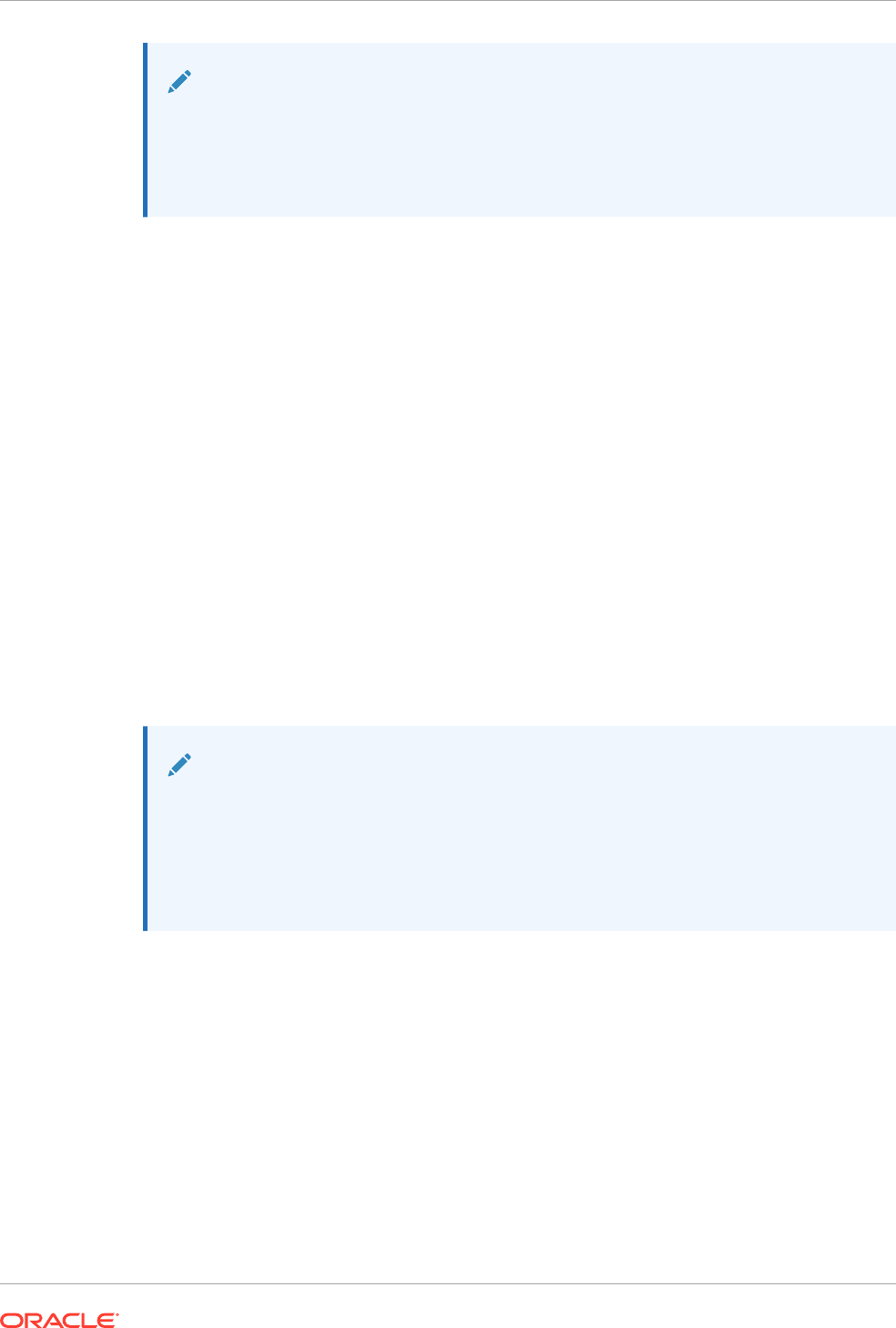
Note:
The value of this application-specific property (if set) overrides the value of domain-
level configuration property.
By default the value is not explicitly set.
Disabling RESTful Web Service Application Monitoring for a WebLogic
Domain
Application monitoring is enabled by default for all RESTful web service applications
deployed to a WebLogic domain. It is possible to reverse this default behavior in a WebLogic
domain and disable JAX-RS monitoring for all RESTful web service applications deployed in
the domain (unless overridden by an application-specific configuration) by setting the
JaxRsMonitoringDefaultBehavior
property on
WebAppContainerMBean
to
false
:
WebAppContainerMBean.setJaxRsMonitoringDefaultBehavior("false")
This Web Application Container property is a domain-level property used by Jersey/WebLogic
integration code to determine the behavior of monitoring in JAX-RS applications at the
domain level:
• If set to
true
(or not set), then JAX-RS monitoring is enabled (if not overridden by
properties set directly in an application). By default this property is not set explicitly and
monitoring is enabled.
• If set to
false
, then monitoring for all JAX-RS applications is disabled by default for the
given domain.
Note:
You can override this domain-level setting in each JAX-RS application by setting
similar properties,
WebAppComponentMBean#isJaxRsMonitoringDefaultBehavior())
, at the application
level. See Disabling Monitoring for a RESTful Web Service Application Using
WebLogic Configuration MBean.
You can update the
WebAppContainerMBean.JaxRsMonitoringDefaultBehavior
property for
the domain using WLST commands before starting the domain, or before deploying any
applications, as shown in Example 7-4.
Example 7-4 provides a sample WLST script that disables JAX-RS monitoring for the entire
domain by default.
Example 7-4 Sample WLST Script for Disabling JAX-RS Monitoring at Domain Level
connect(<user>, <password>)
edit()
startEdit()
cd("WebAppContainer/<domain_name>/")
cmo.setJaxRsMonitoringDefaultBehavior(false)
activate()
Chapter 7
Disabling RESTful Web Service Application Monitoring
7-9

Note:
You must restart the domain after you disable monitoring to ensure that all
previously deployed applications are redeployed with the new setting.
[Example 7-5 shows a section of the resulting domain configuration document at
DOMAIN_NAME/config/config.xml
after you have changed the
jax-rs-monitoring-
default-behavior
setting to
false
.
Example 7-5 config.xml file with JAX-RS Monitoring Disabled at the Domain
Level
<?xml version='1.0' encoding='UTF-8'?>
<domain ...>
<name>mydomain</name>
...
<web-app-container>
<jax-rs-monitoring-default-behavior>false
</jax-rs-monitoring-default-behavior>
</web-app-container>
...
</domain>
Note:
Although it is possible to do so, Oracle does not recommend editing the
config.xml
file directly. See Domain Configuration Files in Understanding
Domain Configuration for Oracle WebLogic Server.
Enable Monitoring of Synthetic Jersey Resources in a
RESTful Web Service Application
When a RESTful web service application is deployed on WebLogic Server, the Jersey
runtime (to satisfy JAX-RS specification requirements) introspects all the application
resources and eventually extends the resource model of the application with additional
synthetic resources and/or resource methods. For example, synthetic resources and
resource methods are added to support:
• Resources exposing the WADL for the entire JAX-RS application, as well as a
partial WADL for any deployed resource.
• OPTIONS method handlers for each resource or resource method of the JAX-RS
application.
• HEAD method handlers for each resource or resource method of the JAX-RS
application.
Depending on the application, it is possible that quite a lot of additional synthetic
resources may get added to a deployed application. For performance reasons,
WebLogic Server, by default, does not expose runtime MBeans for these extended
synthetic resources and resource methods.
Chapter 7
Enable Monitoring of Synthetic Jersey Resources in a RESTful Web Service Application
7-10

You can, however, display information about these additional synthetic resources in the
WebLogic Server Administration Console by setting the following Jersey 2.x/JAX-RS
application property to
true
:
jersey.config.wls.server.monitoring.extended.enabled
You can set this property programmatically in the JAX-RS application subclass code, or
declaratively via Servlet init parameters specified in the
web.xml
as shown in the following
examples.
For convenience, the property name is stored in the
weblogic.jaxrs.server.WeblogicServerProperties.MONITORING_EXTENDED_ENABLED
constant field.
Example 7-6 provides an example of how you can enable monitoring for synthetic resources
programmatically in a JAX-RS application by extending the JAX-RS Application class.
Example 7-6 Enable Synthetic Monitoring Programmatically by Extending the JAX-RS
Application Class
@ApplicationPath("/")
public class MyApplication extends Application {
public Map<String, Object> getProperties() {
final Map<String, Object> properties = new HashMap<>();
// Expose MBeans for extended JAX-RS resources and resource methods
properties.put(weblogic.jaxrs.server.WeblogicServerProperties.MONITORING_EXTENDED_ENABL
ED, true);
return properties;
}
}
Example 7-7 provides an example of how you can enable monitoring of synthetic resources
programmatically in a JAX-RS/Jersey application by extending the JAX-RS Jersey
ResourceConfig
class.
Example 7-7 Enable Synthetic Monitoring Programmatically by Extending the Jersey
ResourceConfig Class
@ApplicationPath("/")
public class MyApplication extends ResourceConfig {
public MyApplication() {
// ...
// Expose MBeans for extended JAX-RS resources and resource methods
property(weblogic.jaxrs.server.WeblogicServerProperties.MONITORING_EXTENDED_ENABLED,
true);
}
// ...
}
Example 7-8 provides an example of how you can enable monitoring of synthetic resources
declaratively using Servlet init parameters specified in the
web.xml
.
Chapter 7
Enable Monitoring of Synthetic Jersey Resources in a RESTful Web Service Application
7-11

Example 7-8 Enable Synthetic Monitoring Declaratively Using Servlet Init
Parameters in web.xml
<?xml version="1.0" encoding="ISO-8859-1"?>
<web-app version="2.5"
xmlns="http://xmlns.jcp.org/xml/ns/javaee"
xmlns:xsi="http://www.w3.org/2001/XMLSchema-instance"
xsi:schemaLocation="http://xmlns.jcp.org/xml/ns/javaee http://
xmlns.jcp.org/xml/ns/javaee/web-app_3_1.xsd">
<servlet>
<servlet-name>com.examples.MyApplication</servlet-name>
...
<init-param>
<param-name>jersey.config.wls.server.monitoring.extended.enabled</param-
name>
<param-value>true</param-value>
</init-param>
...
<load-on-startup>1</load-on-startup>
</servlet>
<servlet-mapping>
<servlet-name>com.examples.MyApplication</servlet-name>
<url-pattern>/*</url-pattern>
</servlet-mapping>
</web-app>
Chapter 7
Enable Monitoring of Synthetic Jersey Resources in a RESTful Web Service Application
7-12

8
Using Server-Sent Events in WebLogic Server
Oracle WebLogic Server supports server-sent events through the integration of the Jersey 2.x
library.The Jersey 2.x library provides the Reference Implementation (RI) of JSR-339 (JAX-
RS 2.0: Java API for RESTful Web Services).
• Overview of Server-Sent Events (SSE)
• Understanding the WebLogic Server-Sent Events API
• Sample Applications for Server-Sent Events
Overview of Server-Sent Events (SSE)
Server-sent events enable servers to push data to web pages over standard HTTP or HTTPS
through a unidirectional client-server connection. In the server-sent events communication
model, the browser client establishes the initial connection, and the server provides the data
and sends it to the client. For general information about server-sent events, see the Server-
Sent Events W3C Candidate Recommendation.
Server-sent events are part of the HTML 5 specification, which also includes WebSocket
technology. Both communication models enable servers to send data to clients unsolicited.
However, server-sent events establish one-way communication from server to clients, while a
WebSocket connection provides a bidirectional, full-duplex communication channel between
servers and clients, promoting user interaction through two-way communication. The
following key differences exist between WebSocket and server-sent events technologies:
• Server-sent events can only push data to the client, while WebSocket technology can
both send and receive data from a client.
• The simpler server-sent events communication model is better suited for server-only
updates, while WebSocket technology requires additional programming for server-only
updates.
• Server-sent events are sent over standard HTTP and therefore do not require any special
protocol or server implementation to work. WebSocket technology requires the server to
understand the WebSocket protocol to successfully upgrade an HTTP connection to a
WebSocket connection.
For more information about WebSocket technology, see Using the WebSocket Protocol in
WebLogic Server in Developing Applications for Oracle WebLogic Server.
Understanding the WebLogic Server-Sent Events API
WebLogic Server supports server-sent events through the integration of the Jersey 2.x. The
use of server-sent events through Jersey 2.x is supported only in JAX-RS resources.For
more information about server-sent events in Jersey 2.x, see Server-Sent Events (SSE)
Support in the Jersey 2.22 User Guide.
The WebLogic Server Server-Sent Events API is in the package
org.glassfish.jersey.media.sse
. For information about the interfaces and classes included
in this package, see the API documentation for
org.glassfish.jersey.media.sse
in the
Jersey 2.22 API Documentation.
8-1

Sample Applications for Server-Sent Events
Sample applications for server-sent events are available through the Jersey project.
Refer to the following locations:
•
https://github.com/jersey/jersey/tree/master/examples/server-sent-
events-jersey
•
https://github.com/jersey/jersey/tree/master/examples/sse-item-store-
jersey-webapp
•
https://github.com/jersey/jersey/tree/master/examples/sse-twitter-
aggregator
Chapter 8
Sample Applications for Server-Sent Events
8-2

A
Compatibility with Earlier Jersey/JAX-RS
Releases
Some Jersey 1.x (JAX-RS 1.1 RI) features have been deprecated or are no longer supported
in Oracle WebLogic Server, but have been maintained for backward compatibility.
• Develop RESTful Web Service Clients Using Jersey 1.18 (JAX-RS 1.1 RI)
• Support for Jersey 1.18 (JAX-RS 1.1 RI) Deployments Packaged with Pre-3.0 Servlets
Develop RESTful Web Service Clients Using Jersey 1.18 (JAX-
RS 1.1 RI)
Support for several client packages, including the
com.sun.jersey
package, its nested
packages, and the
weblogic.jaxrs.api.client
package, is deprecated in this release of
Oracle WebLogic Server.
Note:
Oracle recommends that you update your RESTful client applications to use the
JAX-RS 2.0 client APIs at your earliest convenience. See Summary of Tasks to
Develop RESTful Web Service Clients.
The Jersey 1.x server-side APIs are no longer supported. You should use the
corresponding standard JAX-RS 2.0 or Jersey 2.x server APIs instead.
The following table summarizes a subset of the tasks that are required to develop RESTful
web service clients. For more information about advanced tasks, see More Advanced
RESTful Web Service Client Tasks
Table A-1 Summary of Tasks to Develop RESTful Web Service Clients
Task More Information
Create and configure an instance of the
weblogic.jaxrs.api.client.Client
class.
Creating and Configuring a Client Instance
Create an instance of the Web resource. Creating a Web Resource Instance
Send requests to the resource. For example, HTTP
requests to GET, PUT, POST, and DELETE resource
information.
Sending Requests to the Resource
Receive responses from the resource. Receiving a Response from a Resource
A-1

For information about developing RESTful web service clients using Oracle
JDeveloper, see Creating RESTful Web Services and Clients in Developing
Applications with Oracle JDeveloper.
Example of a RESTful Web Service Client
The following simple example demonstrates how a RESTful web service client can be
used to call the RESTful web service defined in Example 2-1. In this example:
• The
Client
instance is created to access the client API. See Creating and
Configuring a Client Instance.
• The
WebResource
instance is created to access the Web resource. See Creating a
Web Resource Instance.
• A
get
request is sent to the resource. See Sending Requests to the Resource.
• The response is returned as a String value. For more information about receiving
the response, see Receiving a Response from a Resource.
Additional examples are listed in Learn More About RESTful Web Services.
Example A-1 Simple RESTful Web Service Client Using Jersey 1.18 (JAX-RS
1.1 RI)
package samples.helloworld.client;
import weblogic.jaxrs.api.client.Client;
import com.sun.jersey.api.client.WebResource;
public class helloWorldClient {
public helloWorldClient() {
super();
}
public static void main(String[] args) {
Client c = Client.create();
WebResource resource = c.resource("http://localhost:7101/RESTfulService/
jersey/helloworld");
String response = resource.get(String.class);
System.out.println(response);
}
}
Creating and Configuring a Client Instance
To access the Jersey JAX-RS RI client API, create an instance of the
weblogic.jaxrs.api.client.Client
class.
Note:
Alternatively, you can create an instance of the
com.sun.jersey.api.client.Client
class.
Optionally, you can pass client configuration properties, defined in Table A-2, when
creating the client instance by defining a
Appendix A
Develop RESTful Web Service Clients Using Jersey 1.18 (JAX-RS 1.1 RI)
A-2

com.sun.jersey.api.client.config.ClientConfig
and passing the information to the
create
method. See the
ClientConfig
interface in the jersey-bundle 1.18 API.
Table A-2 RESTful Web Service Client Configuration Properties
Property Description
PROPERTY_BUFFER_RESPONSE_ENTITY_ON_EXCEPTIO
N
Boolean value that specifies whether the client should
buffer the response entity, if any, and close resources
when a
UniformInterfaceException
is thrown. This
property defaults to
true
.
PROPERTY_CHUNKED_ENCODING_SIZE
Integer value that specifies the chunked encoding size.
A value equal to or less than 0 specifies that the default
chunk size should be used. If not set, then chunking will
not be used.
PROPERTY_CONNECT_TIMEOUT
Integer value that specifies the connect timeout interval
in milliseconds. If the property is 0 or not set, then the
interval is set to infinity.
PROPERTY_FOLLOW_REDIRECTS
Boolean value that specifies whether the URL will
redirect automatically to the URI declared in
3xx
responses. This property defaults to
true
.
PROPERTY_READ_TIMEOUT
Integer value that specifies the read timeout interval in
milliseconds. If the property is 0 or not set, then the
interval is set to infinity.
Example A-2 provides an example of how to create a client instance.
Example A-2 Creating a Client Instance
import weblogic.jaxrs.api.client.Client;
...
public static void main(String[] args) {
Client c = Client.create();
...
Example A-3 provides an example of how to create a client instance and pass configuration
properties to the
create
method.
Example A-3 Creating and Configuring a Client Instance
import com.sun.jersey.api.client.*;
import weblogic.jaxrs.api.client.Client;
...
public static void main(String[] args) {
ClientConfig cc = new DefaultClientConfig();
cc.getProperties().put(ClientConfig.PROPERTY_FOLLOW_REDIRECTS, true);
Client c = Client.create(cc);
...
Alternatively, you can configure a client instance after the client has been created, by setting
properties on the map returned from the
getProperties
method or calling a specific setter
method.
Example A-4 provides an example of how to configure a client after it has been created. In
this example:
Appendix A
Develop RESTful Web Service Clients Using Jersey 1.18 (JAX-RS 1.1 RI)
A-3

•
PROPERTY_FOLLOW_REDIRECTS
is configured by setting the property on the map
returned from the
getProperties
method.
•
PROPERTY_CONNECT_TIMEOUT
is configured using the setter method.
Example A-4 Configuring a Client Instance After It Has Been Created
import com.sun.jersey.api.client.*;
import weblogic.jaxrs.api.client.Client;
...
public static void main(String[] args) {
Client c = Client.create();
c.getProperties().put(ClientConfig.PROPERTY_FOLLOW_REDIRECTS, true);
c.setConnectTimeout(3000);
...
Example A-5 provides an example of how to configure a client instance to use basic
authentication.
Example A-5 Configuring a Client Instance to Use Basic Authentication
import javax.ws.rs.core.MediaType;
import com.sun.jersey.api.client.Client;
import com.sun.jersey.api.client.WebResource;
import com.sun.jersey.api.client.filter.HTTPBasicAuthFilter;
...
Client c = Client.create();
c.addFilter(new HTTPBasicAuthFilter("weblogic", "password"));
WebResource resource = c.resource("http://localhost:7001/management/tenant-monitoring/
datasources/JDBC%20Data%20Source-0");
String response = resource.accept("application/json").get(String.class); //application/xml
// resource.accept(MediaType.APPLICATION_JSON_TYPE).get(String.class);
System.out.println(response);
...
Creating a Web Resource Instance
Before you can issue requests to a RESTful web service, you must create an instance
of
com.sun.jersey.api.client.WebResource
or
com.sun.jersey.api.client.AsyncWebResource
to access the resource specified by
the URI. The
WebResource
or
AsyncWebResource
instance inherits the configuration
defined for the client instance. For more information, see the following in the jersey-
bundle 1.18 API:
•
WebResource
•
AsyncWebResource
Note:
Because clients instances are expensive resources, if you are creating
multiple Web resources, it is recommended that you re-use a single client
instance whenever possible.
Appendix A
Develop RESTful Web Service Clients Using Jersey 1.18 (JAX-RS 1.1 RI)
A-4

Example A-6 provides an example of how to create an instance to a Web resource hosted at
http://example.com/helloworld
.
Example A-6 Creating a Web Resource Instance
import com.sun.jersey.api.client.*;
import weblogic.jaxrs.api.client.Client;
...
public static void main(String[] args) {\
...
Client c = Client.create();
WebResource resource = c.resource("http://example.com/helloWorld");
...
Example A-7 provides an example of how to create an instance to an asynchronous Web
resource hosted at
http://example.com/helloworld
.
Example A-7 Creating an Asynchronous Web Resource Instance
import com.sun.jersey.api.client.*;
import weblogic.jaxrs.api.client.Client;
...
public static void main(String[] args) {\
...
Client c = Client.create();
AsyncWebResource asyncResource = c.asyncResource("http://example.com/helloWorld");
...
Sending Requests to the Resource
Use the
WebResource
or
AsyncWebResource
instance to build requests to the associated Web
resource, as described in the following sections:
• How to Build Requests
• How to Send HTTP Requests
• How to Configure the Accept Header
• How to Pass Query Parameters
How to Build Requests
Requests to a Web resource are structured using the builder pattern, as defined by the
com.sun.jersey.api.client.RequestBuilder
interface. The
RequestBuilder
interface is
implemented by
com.sun.jersey.api.client.WebResource
,
com.sun.jersey.api.client.AsyncWebResource
, and other resource classes.
You can build a request using the methods defined in Table A-3, followed by the HTTP
request method, as described in How to Send HTTP Requests. Examples of how to build a
request are provided in the sections that follow.
See the
RequestBuilder
methods in the jersey 1.18 bundle API.
Table A-3 Building a Request
Method Description
accept()
Defines the acceptable media types. See How to Configure the Accept Header.
Appendix A
Develop RESTful Web Service Clients Using Jersey 1.18 (JAX-RS 1.1 RI)
A-5
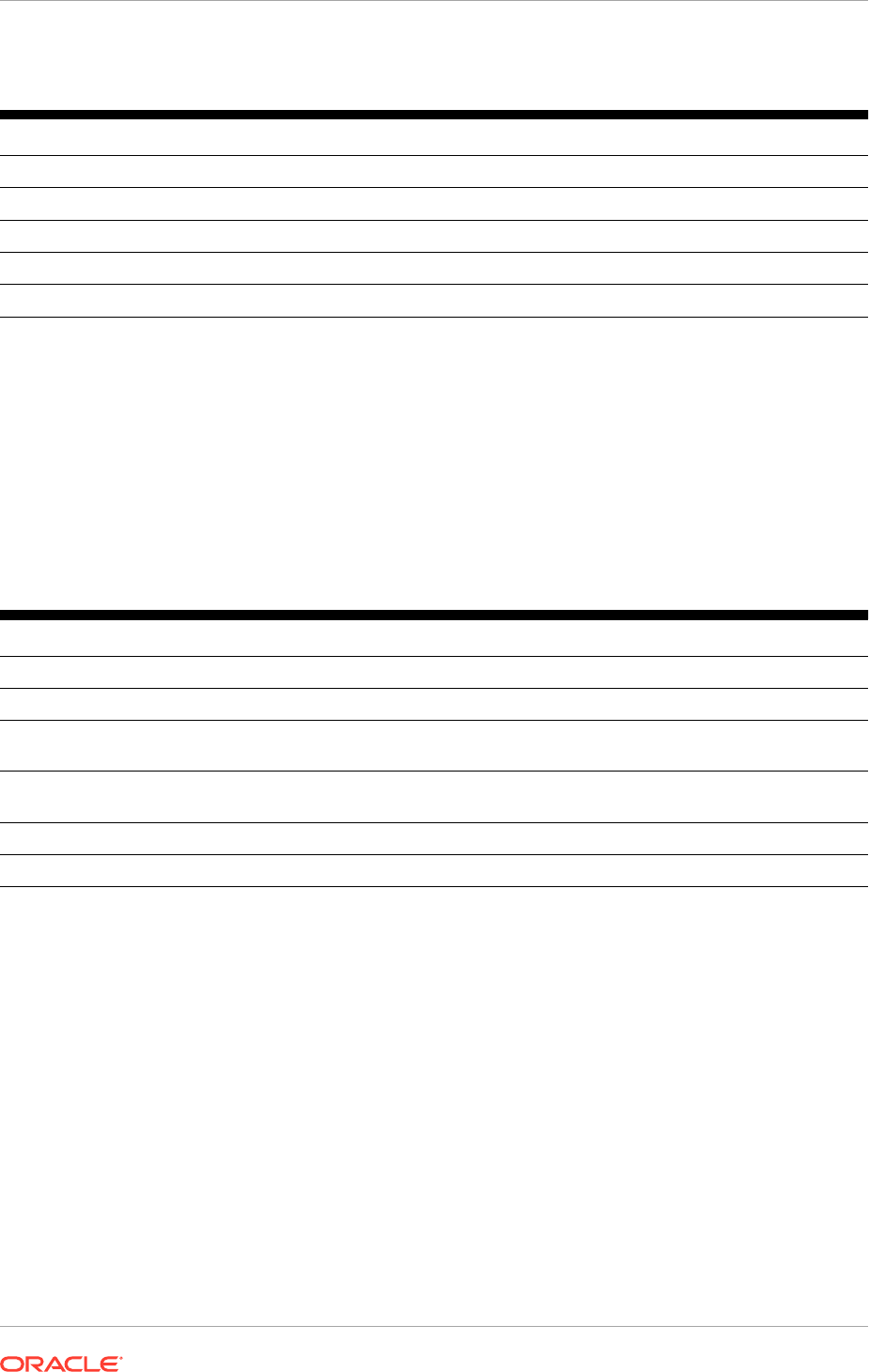
Table A-3 (Cont.) Building a Request
Method Description
acceptLanguage()
Defines the acceptable languages using the
acceptLanguage
method.
cookie()
Adds a cookie to be set.
entity()
Configures the request entity. See How to Configure the Request Entity.
header()
Adds an HTTP header and value. See How to Configure the Accept Header.
type()
Configures the media type. See How to Configure the Request Entity.
How to Send HTTP Requests
Table A-4 list the
WebResource
and
AsyncWebResource
methods that can be used to
send HTTP requests.
In the case of
AsyncWebResource
, a
java.util.concurrent.Future<V>
object is
returned, which can be used to access the result of the computation later, without
blocking execution. See the
Future<V>
interface methods in the Java Platform,
Standard Edition 8 API Specification.
Table A-4 WebResource Methods to Send HTTP Requests
Method Description
get()
Invoke the HTTP GET method to get a representation of the resource.
head()
Invoke the HTTP HEAD method to get the meta-information of the resource.
options()
Invoke the HTTP OPTIONS method to get the HTTP methods that the JAX-RS
service supports.
post()
Invoke the HTTP POST method to create or update the representation of the specified
resource.
put()
Invoke the HTTP PUT method to update the representation of the resource.
delete()
Invoke the HTTP DELETE method to delete the representation of the resource.
If the response has an entity (or representation), then the Java type of the instance
required is declared in the HTTP method.
Example A-8 provides an example of how to send an HTTP GET request. In this
example, the response entity is requested to be an instance of
String.
The response
entity will be de-serialized to a
String
instance.
Example A-8 Sending an HTTP GET Request
import com.sun.jersey.api.client.WebResource;
...
public static void main(String[] args) {
...
WebResource resource = c.resource("http://example.com/helloWorld");
String response = resource.get(String.class);
...
Appendix A
Develop RESTful Web Service Clients Using Jersey 1.18 (JAX-RS 1.1 RI)
A-6

Example A-9 provides an example of how to send an HTTP PUT request and put the entity
foo:bar
into the Web resource. In this example, the response entity is requested to be an
instance of
com.sun.jersey.api.client.ClientResponse
.
Example A-9 Sending an HTTP PUT Request
import com.sun.jersey.api.client.WebResource;
import com.sun.jersey.api.client.ClientResponse;
...
public static void main(String[] args) {
...
WebResource resource = c.resource("http://example.com/helloWorld");
ClientResponse response = resource.put(ClientResponse.class, "foo:bar");
...
If you wish to send an HTTP request using a generic type, to avoid type erasure at runtime,
you need to create a
com.sun.jersey.api.client.GenericType
object to preserve the
generic type. See the
GenericType
class in jersey-bundle 1.18 API.
Example A-10 provides an example of how to send an HTTP request using a generic type
using
GenericType
to preserve the generic type.
Example A-10 Sending an HTTP GET Request Using a Generic Type
import com.sun.jersey.api.client.WebResource;
...
public static void main(String[] args) {
...
WebResource resource = c.resource("http://example.com/helloWorld");
List<String> list = resource.get(new GenericType<List<String>>() {});
...
How to Pass Query Parameters
You can pass query parameters in the GET request by defining a
javax.ws.rs.core.MultivaluedMap
and using the
queryParams
method on the Web resource
to pass the map as part of the HTTP request.
For more information, see the
MultivaluedMap
interface in Java EE 7 API Specification.
Example A-11 provides an example of how to pass parameters in a GET request to a Web
resource hosted at
http://example.com/helloworld
, resulting in the following request URI:
http://example.com/base?param1=val1¶m2=val2
Example A-11 Passing Query Parameters
import com.sun.jersey.api.client.WebResource;
import javax.ws.rs.core.MultivaluedMap;
import javax.ws.rs.core.MultivaluedMapImpl;
...
public static void main(String[] args) {
...
WebResource resource = c.resource("http://example.com/helloWorld");
MultivaluedMap queryParams = new MultivaluedMapImpl();
queryParams.add("param1", "val1");
queryParams.add("param2", "val2");
String response = resource.queryParams(queryParams).get(String.class);
...
Appendix A
Develop RESTful Web Service Clients Using Jersey 1.18 (JAX-RS 1.1 RI)
A-7

How to Configure the Accept Header
Configure the
Accept
header for the request using the
accept
method on the Web
resource.
Example A-12 provides an example of how to specify
text/plain
as the acceptable
MIME media type in a GET request to a Web resource hosted at
http://
example.com/helloworld
.
Example A-12 Configuring the Accept Header
import com.sun.jersey.api.client.WebResource;
...
public static void main(String[] args) {
...
WebResource resource = c.resource("http://example.com/helloWorld");
String response = resource.accept("text/plain").get(String.class);
...
How to Add a Custom Header
Add a custom header to the request using the
header
method on the Web resource.
Example A-13 provides an example of how to add a custom header
FOO
with the value
BAR
in a GET request to a Web resource hosted at
http://example.com/helloworld
.
Example A-13 Adding a Custom Header
import com.sun.jersey.api.client.WebResource;
...
public static void main(String[] args) {
...
WebResource resource = c.resource("http://example.com/helloWorld");
String response = resource.header("FOO", "BAR").get(String.class);
...
How to Configure the Request Entity
Configure the request entity and type using the
entity
method on the Web resource.
Alternatively, you can configure the request entity type only using the
type
method on
the Web resource.
Example A-14 provides an example of how to configure a request entity and type.
Example A-14 Configuring the Request Entity
import com.sun.jersey.api.client.WebResource;
...
public static void main(String[] args) {
...
WebResource resource = c.resource("http://example.com/helloWorld");
String response = resource.entity(request, MediaType.TEXT_PLAIN_TYPE).get(String.class);
...
Example A-15 provides an example of how to configure the request entity media type
only.
Appendix A
Develop RESTful Web Service Clients Using Jersey 1.18 (JAX-RS 1.1 RI)
A-8

Example A-15 Configuring the Request Entity Media Type Only
import com.sun.jersey.api.client.WebResource;
...
public static void main(String[] args) {
...
WebResource resource = c.resource("http://example.com/helloWorld");
String response = resource.type(MediaType.TEXT_PLAIN_TYPE).get(String.class);
...
Receiving a Response from a Resource
You define the Java type of the entity (or representation) in the response when you call the
HTTP method, as described in How to Send HTTP Requests.
If response metadata is required, declare the Java type
com.sun.jersey.api.client.ClientResponse
as the response type. The
ClientResponse
type enables you to access status, headers, and entity information.
The following sections describes the response metadata that you can access using the
ClientResponse
. See
ClientResponse
class in jersey-bundle 1.18 API.
• How to Access the Status of Request
• How to Get the Response Entity
How to Access the Status of Request
Access the status of a client response using the
getStatus
method on the
ClientResponse
object. For a list of valid status codes, see
ClientResponse.Status
in jersey-bundle 1.18
API.
Example A-16 provides an example of how to access the status code of the response.
Example A-16 Accessing the Status of the Request
import com.sun.jersey.api.client.WebResource;
import com.sun.jersey.api.client.ClientResponse;
...
public static void main(String[] args) {
...
WebResource resource = c.resource("http://example.com/helloWorld");
ClientResponse response = resource.get(ClientResponse.class);
int status = response.getStatus();
...
How to Get the Response Entity
Get the response entity using the
getEntity
method on the
ClientResponse
object.
Example A-17 provides an example of how to get the response entity.
Example A-17 Getting the Response Entity
import com.sun.jersey.api.client.WebResource;
import com.sun.jersey.api.client.ClientResponse;
...
public static void main(String[] args) {
...
WebResource resource = c.resource("http://example.com/helloWorld");
Appendix A
Develop RESTful Web Service Clients Using Jersey 1.18 (JAX-RS 1.1 RI)
A-9
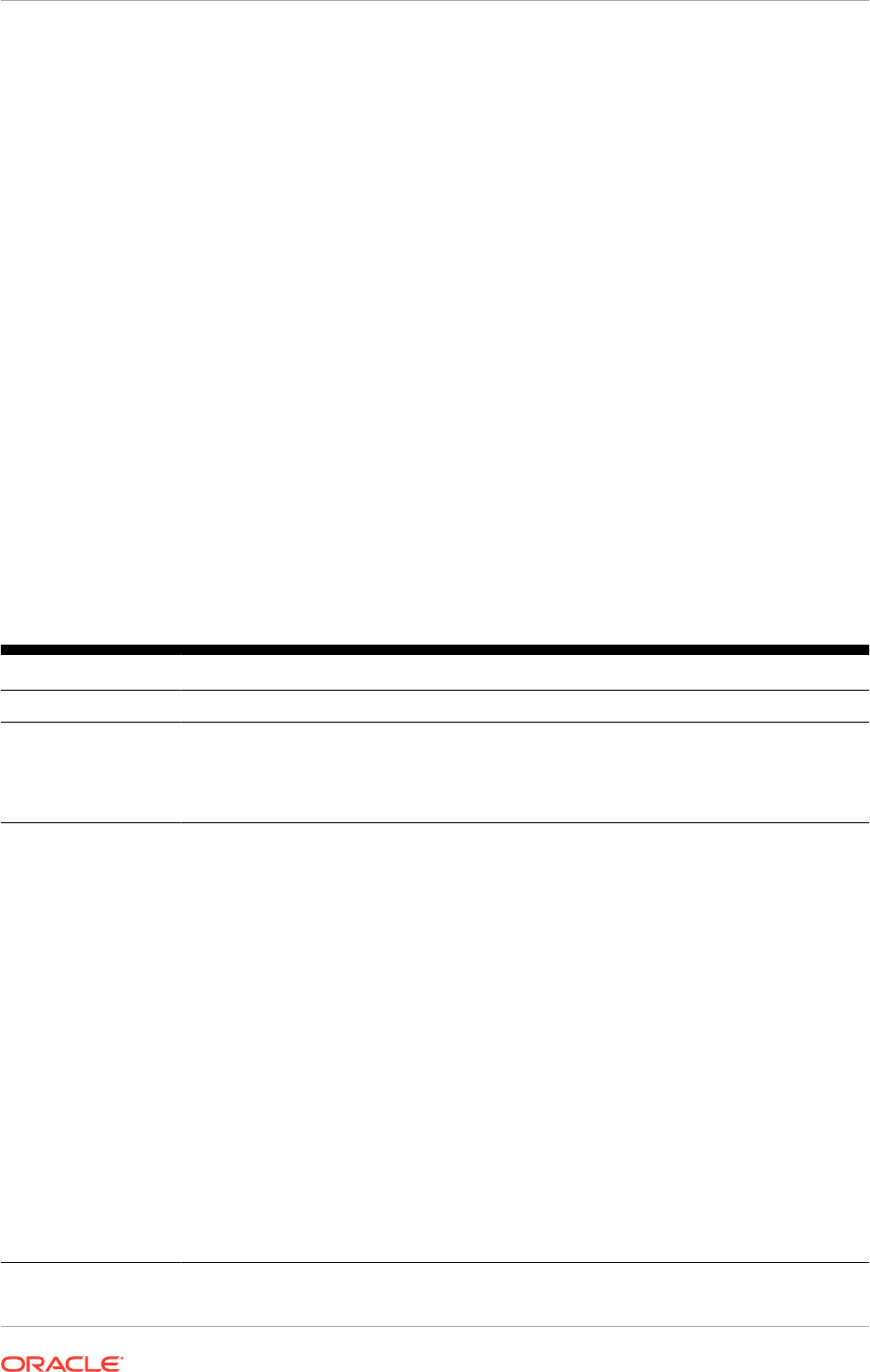
ClientResponse response = resource.get(ClientResponse.class);
String entity = response.getEntity(String.class);
...
More Advanced RESTful Web Service Client Tasks
For more information about advanced RESTful web service client tasks, including
those listed below, see the Jersey 1.18 User Guide.
• Adding new representation types
• Using filters
• Enabling security with HTTP(s) URLConnection
Support for Jersey 1.18 (JAX-RS 1.1 RI) Deployments
Packaged with Pre-3.0 Servlets
For backwards compatibility, deployments that reference a subset of servlet classes
are supported in this release of Oracle WebLogic Server.Refer to Table A-5, which lists
these servlet classes and describes the corresponding elements to update in the
web.xml
deployment descriptor to package the RESTful web service application with a
pre-3.0 servlet.
Table A-5 Packaging the RESTful Web Service Application with Pre-3.0 Servlets
Element Description
<servlet-name>
Set this element to the desired servlet name.
<servlet-class>
Set this element to one of the following classes to delegate all Web requests to the Jersey
servlet:
•
weblogic.jaxrs.server.portable.servlet.ServletContainer
•
com.sun.jersey.spi.container.servlet.ServletContainer
<init-param>
Set this element to define the class that extends the
javax.ws.rs.core.Application
:
<init-param>
<param-name>
javax.ws.rs.Application
</param-name>
<param-value>
ApplicationSubclassName
</param-value>
</init-param>
Alternatively, you can declare the packages in your application, as follows:
<init-param>
<param-name>
com.sun.jersey.config.property.packages
</param-name>
<param-value>
project1
</param-value>
</init-param>
Appendix A
Support for Jersey 1.18 (JAX-RS 1.1 RI) Deployments Packaged with Pre-3.0 Servlets
A-10

Table A-5 (Cont.) Packaging the RESTful Web Service Application with Pre-3.0 Servlets
Element Description
<servlet-mapping>
Set as the base URI pattern that gets mapped to the servlet.
If not specified, one of the following values are used, in order of precedence:
•
@ApplicationPath
annotation value defined in the
javax.ws.rs.core.Application
subclass. For example:
package test;
@ApplicationPath("res")
public class MyJaxRsApplication extends java.ws.rs.core.Application
...
See Packaging With an Application Subclass.
• The value
resources
. This is the default base URI pattern for RESTful web service
applications. See Packaging as a Default Resource.
If both the
<servlet-mapping>
and
@ApplicationPath
are specified, the
<servlet-
mapping>
takes precedence.
For more information about how this information is used in the base URI of the resource,
see What Happens at Runtime: How the Base URI is Constructed.
The following example demonstrates how to update the
web.xml
file if a class that extends
javax.ws.rs.core.Application
is not packaged with
web.xml
.
Example A-18 Updating web.xml for Pre-3.0 Servlets
<web-app>
<servlet>
<servlet-name>Jersey Web Application</servlet-name>
<servlet-class>weblogic.jaxrs.server.portable.servlet.ServletContainer</servlet-class>
<init-param>
<param-name>com.sun.jersey.config.property.resourceConfigClass</param-name>
<param-value>com.sun.jersey.api.core.PackagesResourceConfig</param-value>
</init-param>
<init-param>
<param-name>com.sun.jersey.config.property.packages</param-name>
<param-value>org.foo.rest;org.bar.rest</param-value>
</init-param>
...
</servlet>
...
</web-app>
Appendix A
Support for Jersey 1.18 (JAX-RS 1.1 RI) Deployments Packaged with Pre-3.0 Servlets
A-11
